Violin Chord Charts for ALL Major and Minor Keys
Learn to play chords on the violin
Get finger charts, sheet music and audio samples of ALL major and minor chords
What is a chord?
A chord is anytime more than one note is played at the same time. Full chords must be at least three notes, so two notes at the same time are called partial chords, which are also called double stops by string players because it means playing two strings at once. Playing chords on the violin is an advanced technique that may seem intimidating at first, but it doesn’t have to be! This article includes ways to play major and minor triads in all keys, as well as examples from repertoire and technical tips for practicing chords.
Double stops, playing two notes at once, are very common on violin. Three-note and four-note chords are also sometimes called triple stops or quadruple stops! There are many different ways to play each chord: shifting to different positions, different voicings, three or four notes, etc. Here I describe the most common, comfortable way to play each chord with three notes. If you are looking for just the most basic beginner chords, please see 8 Easy Violin Chords for Beginner Violinists.
Did you know why Paganini was such a great violinist?
He was also a guitarist and approached the violin from chords.
Practicing chords at any level of violin playing is great to improve your technique and intonation.
C Major violin chord
The notes are C E G. Play 1st finger E on D, 2nd finger C on A, 2nd finger G on E.
C Minor violin chord
The notes are C E♭ G. Play low 1st finger E♭ on D, 2nd finger C on A, 2nd finger G on E.

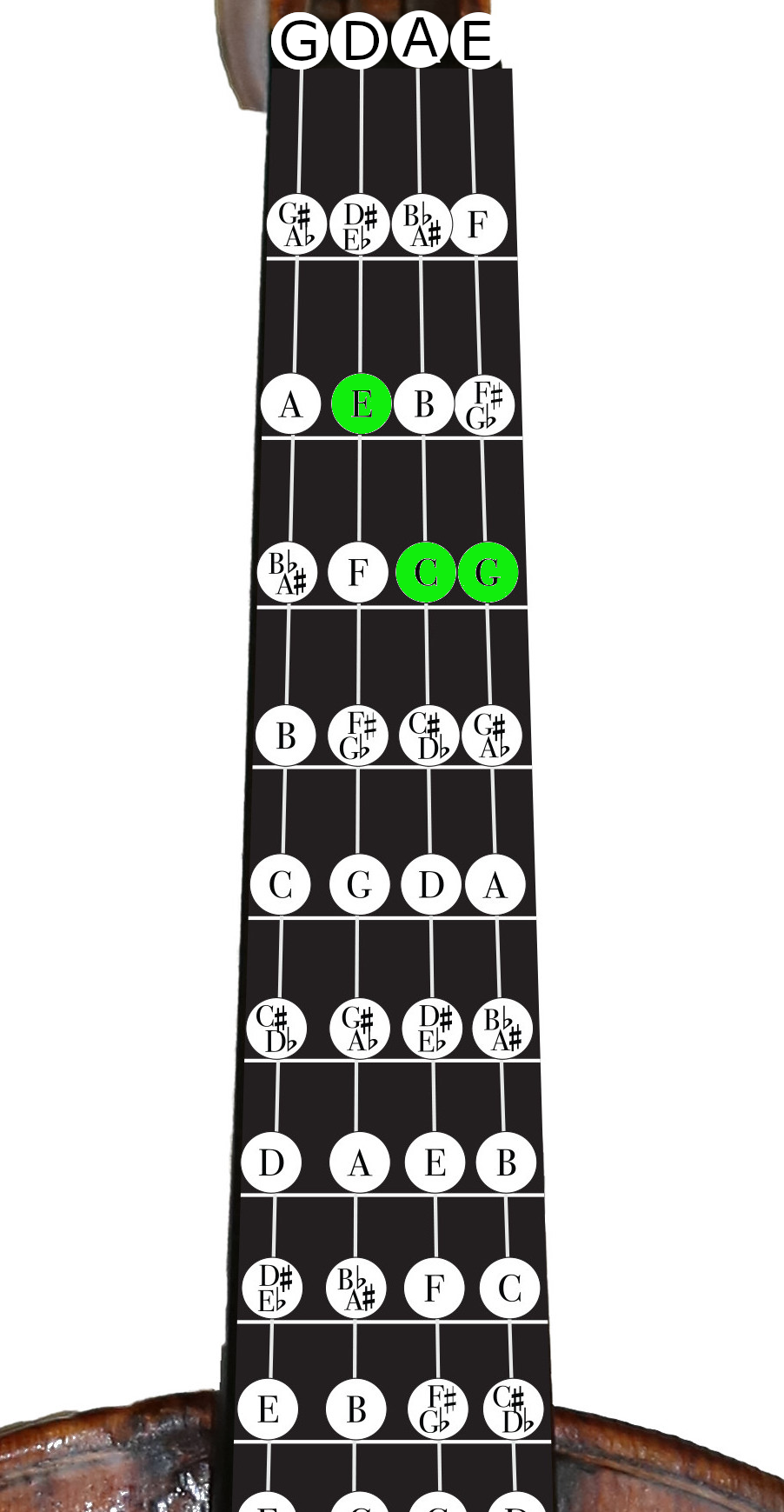

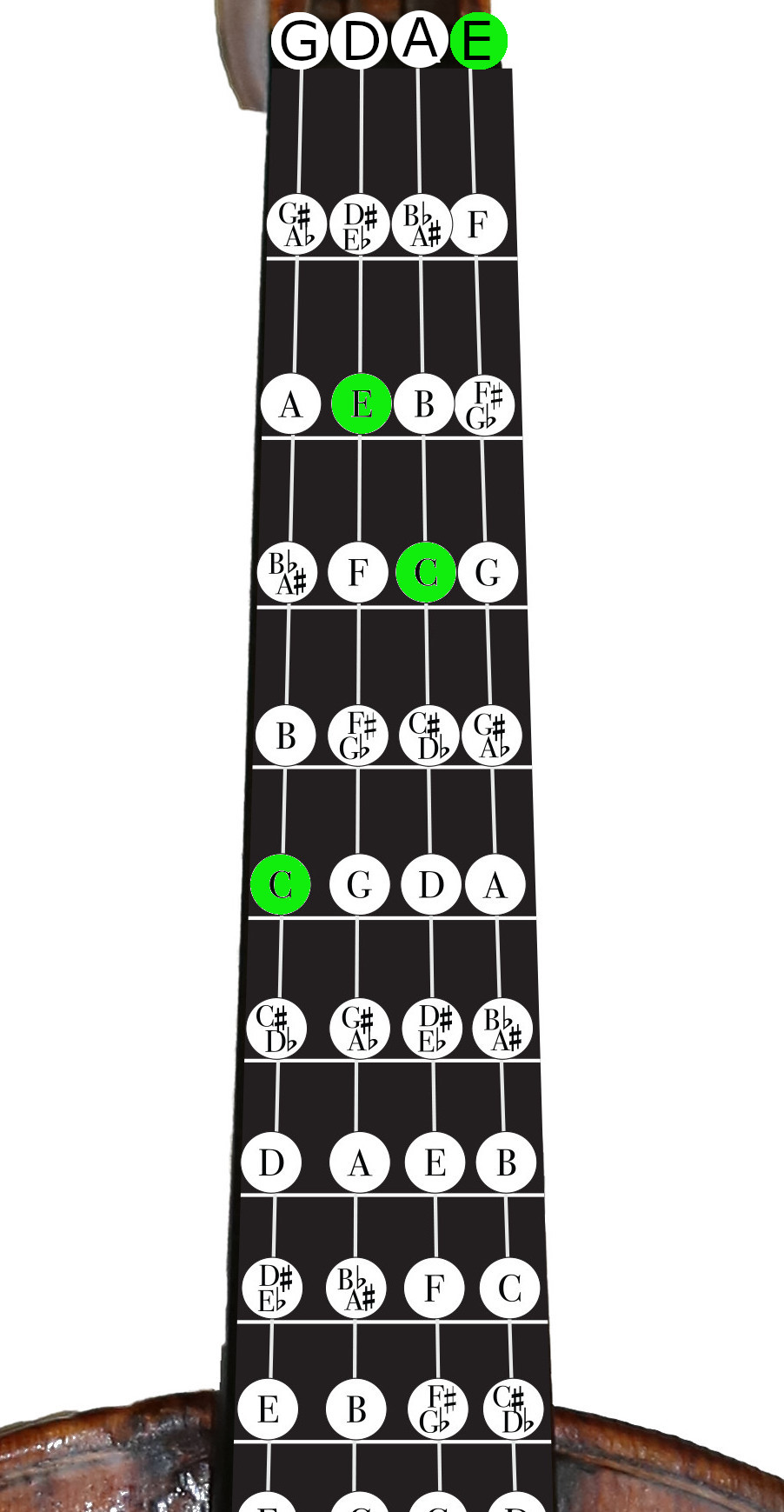

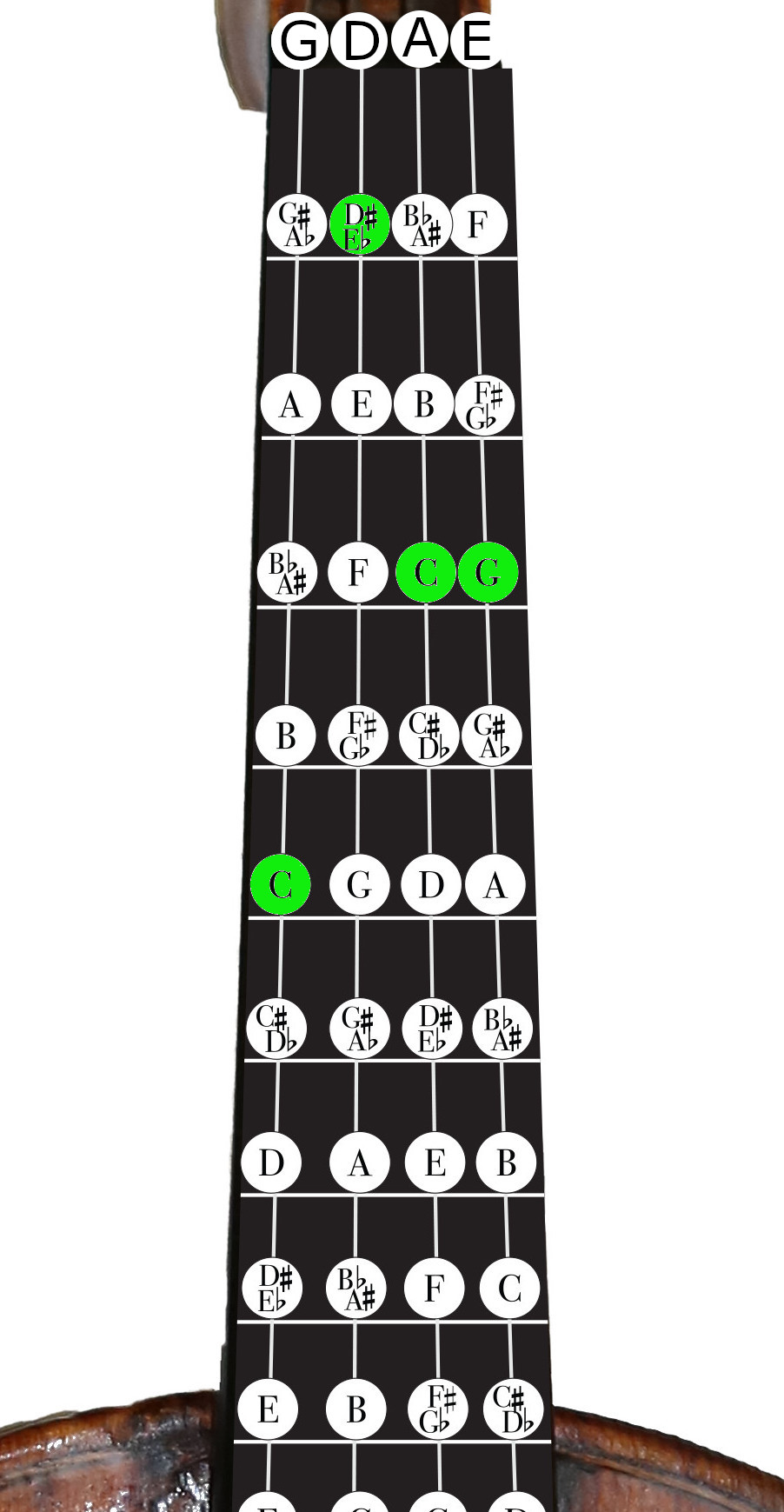
G Major violin chord
The notes are G B D. Play open D, 1st finger B on A, 2nd finger G on E.
G Minor violin chord
The notes are G B♭ D. Play open D, low 1st finger B♭ on A, 2nd finger G on E.

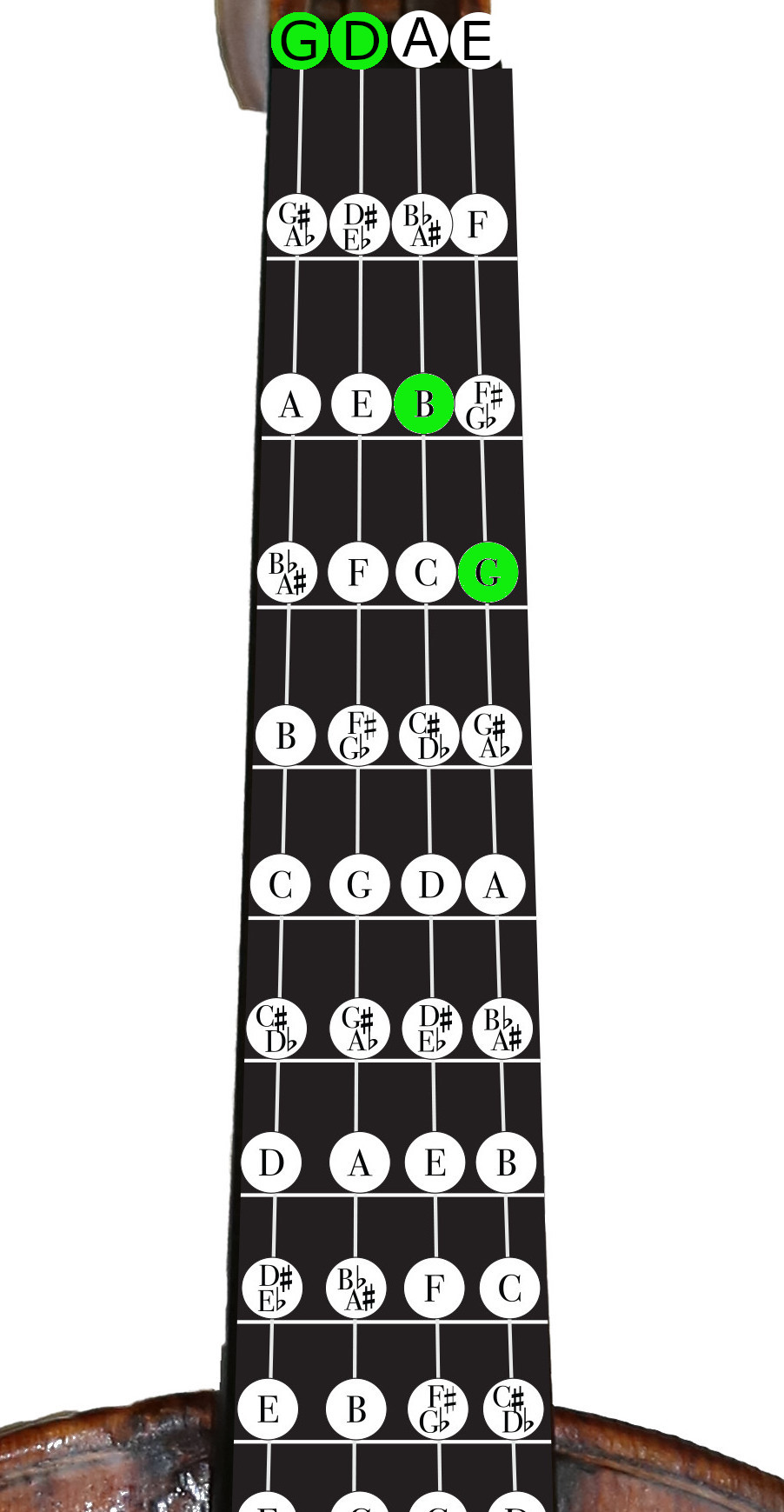

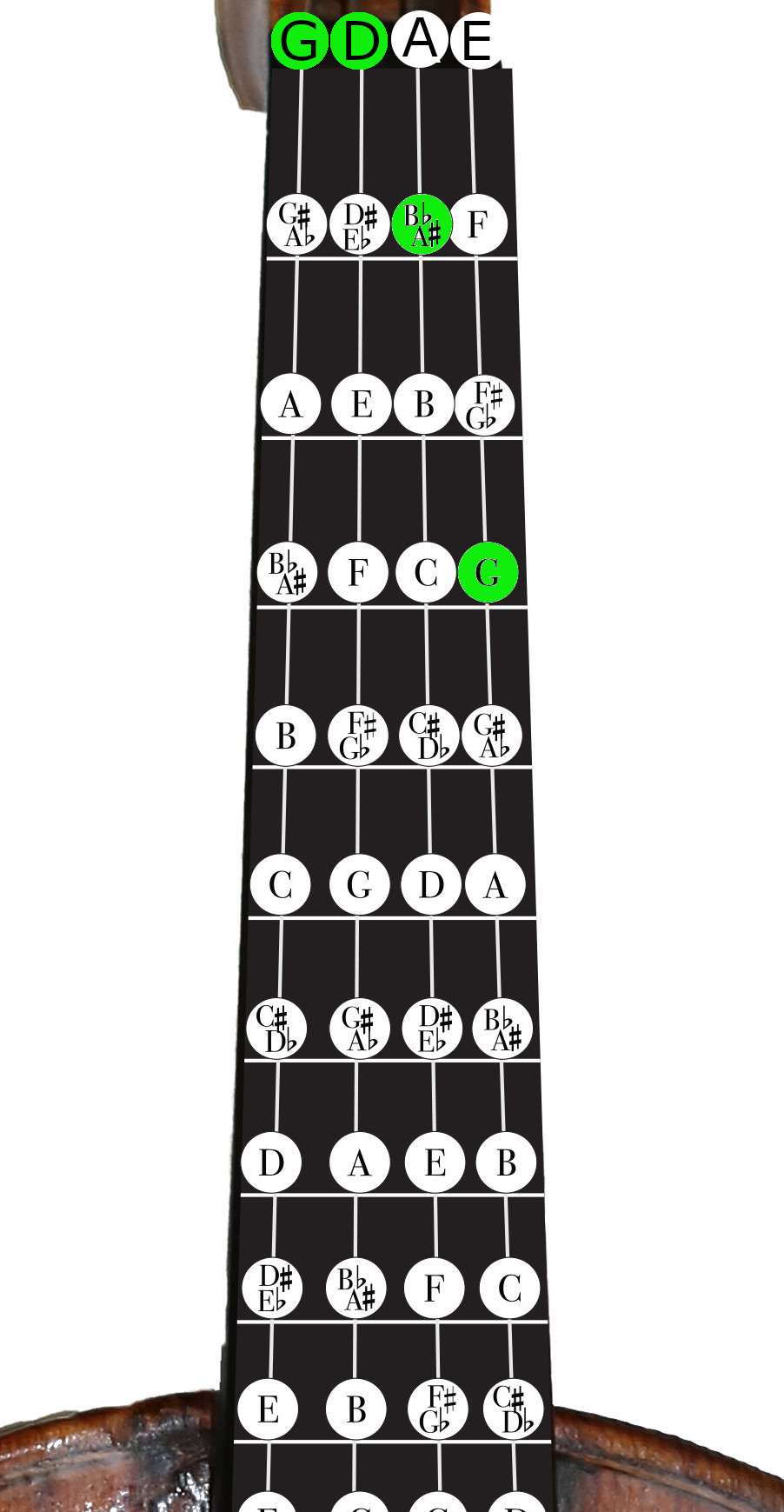
D Major violin chord
The notes are D F# A. Play open D, open A, 1st finger F# on E.
D Minor violin chord
The notes are D F A. Play open D, open A, low 1st finger F on E.

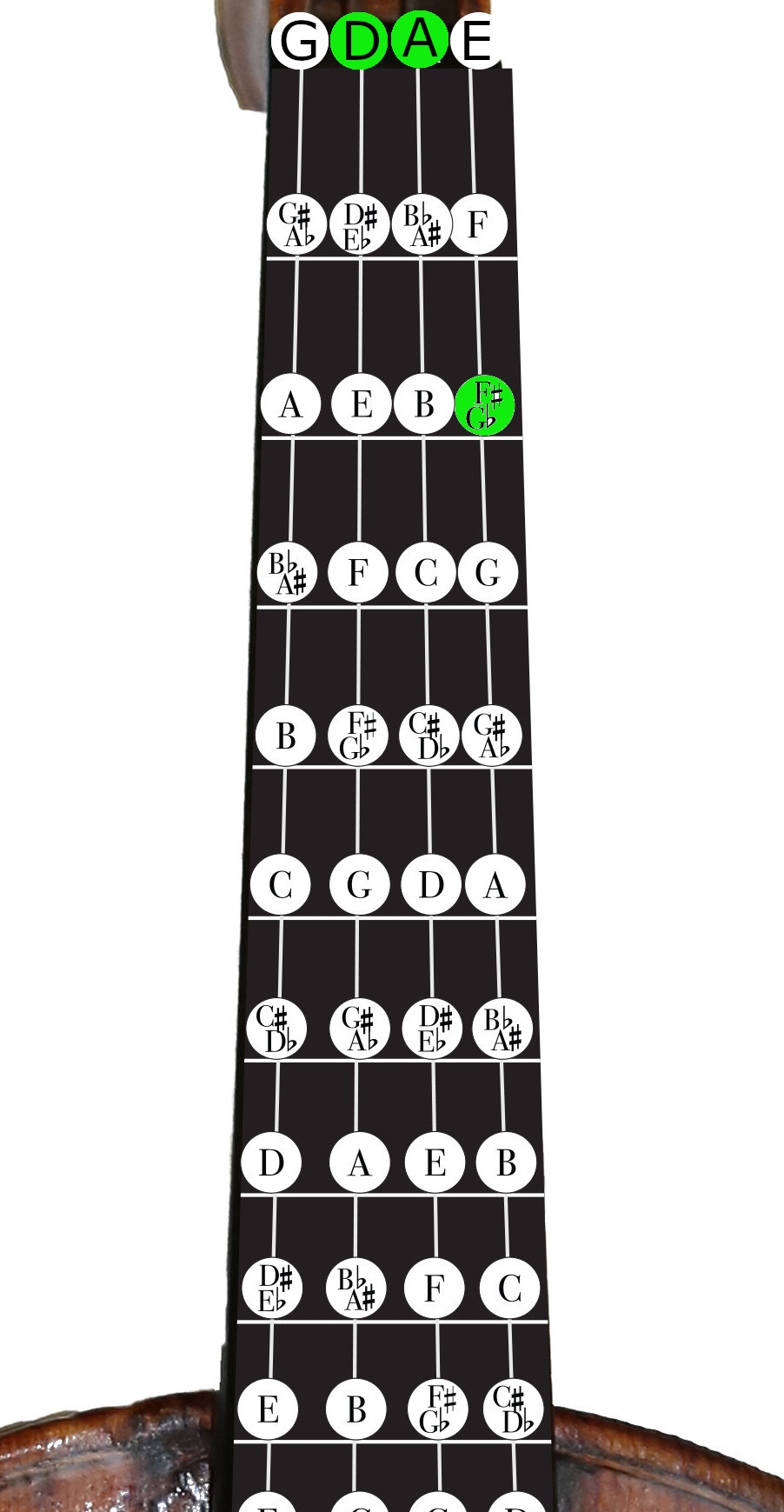

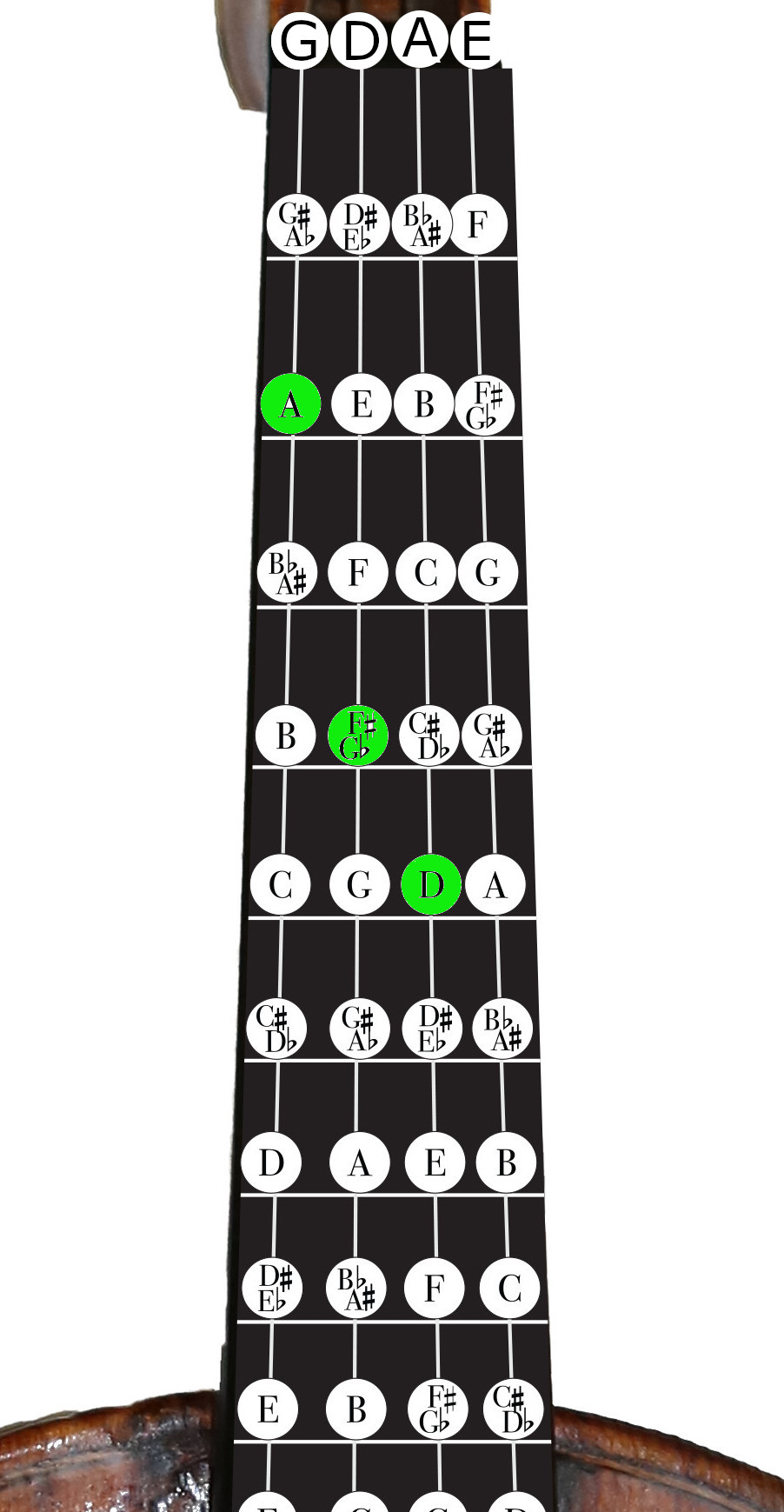

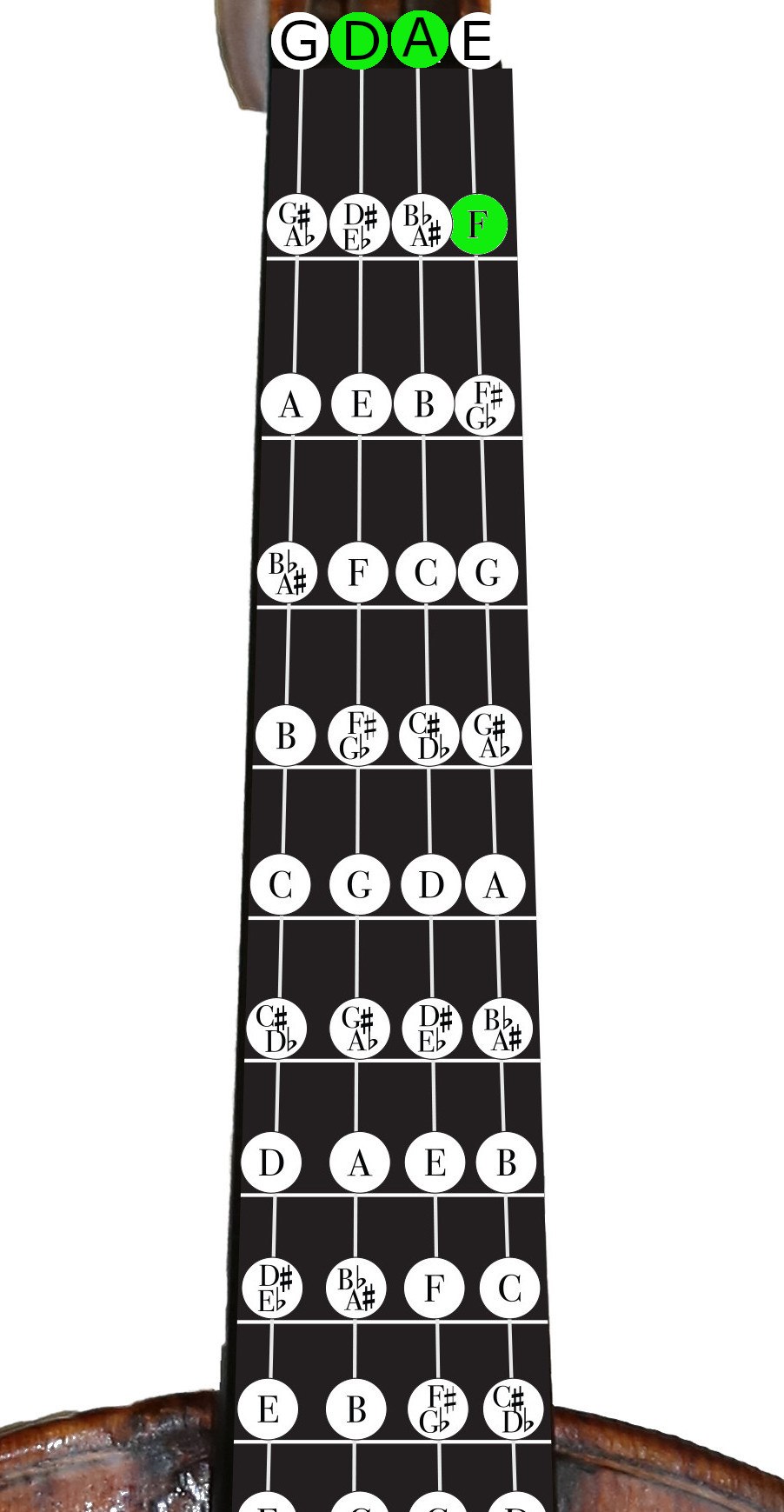
A Major violin chord
The notes are A C# E. Play 1st finger E on D, 2nd finger C# on A, 3rd finger A on E.
A Minor violin chord
The notes are A C E. Play 1st finger E on D, low 2nd finger C on A, 3rd finger A on E.

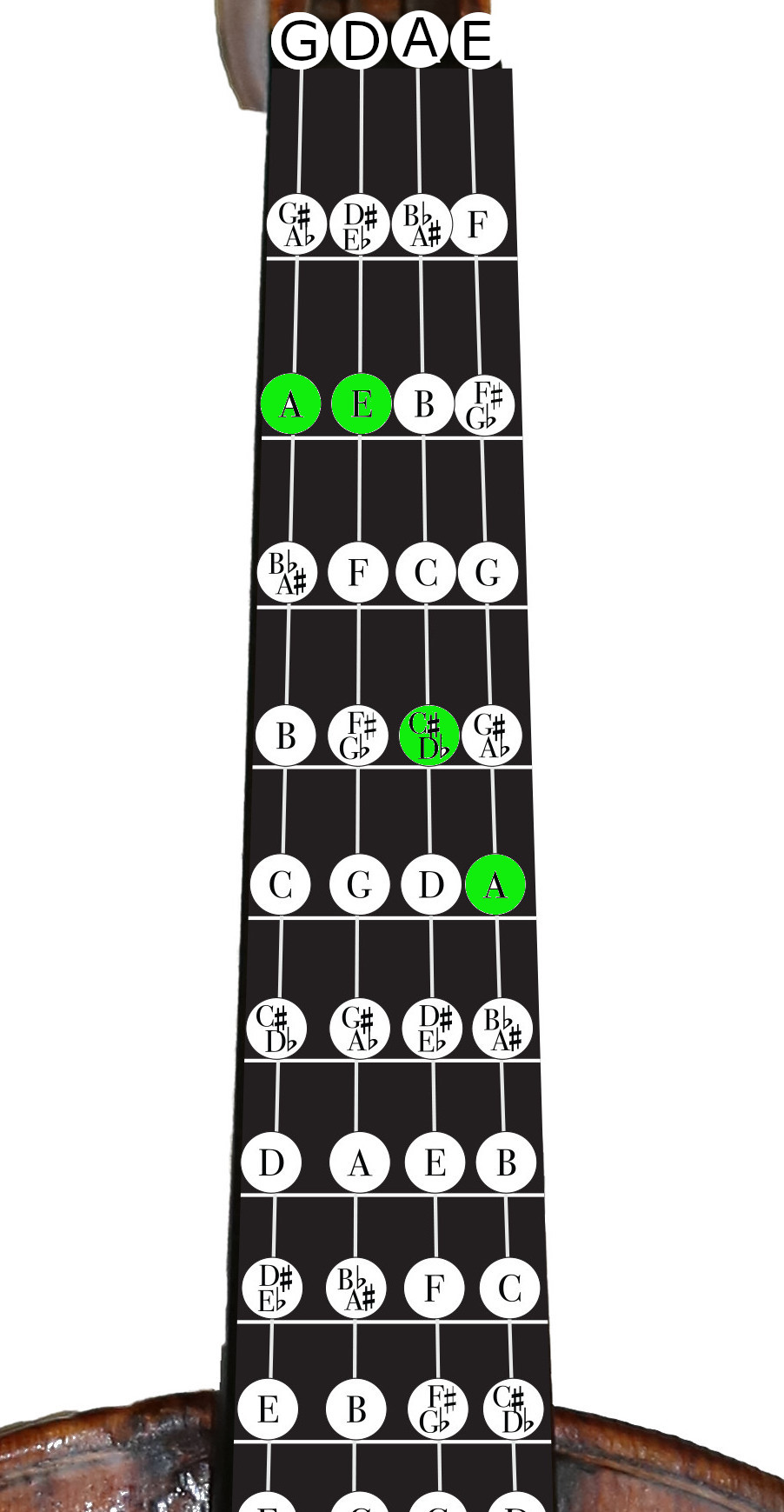

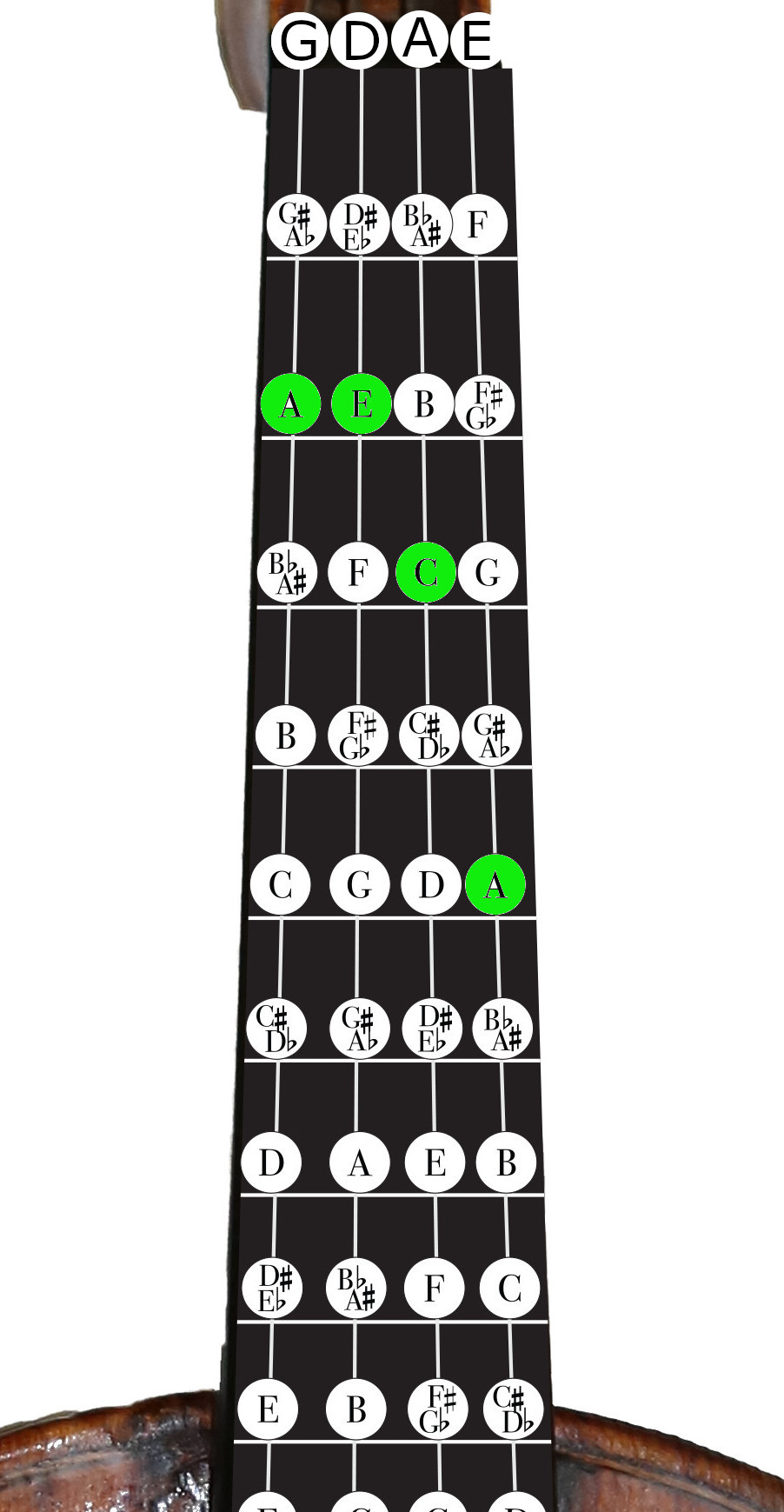
E Major violin chord
The notes are E G# B. Play 1st finger E on D, 1st finger B on A, high 2nd finger G# on E.
E Minor violin chord
The notes are E G B. Play 1st finger E on D, 1st finger B on A, 2nd finger G on E.

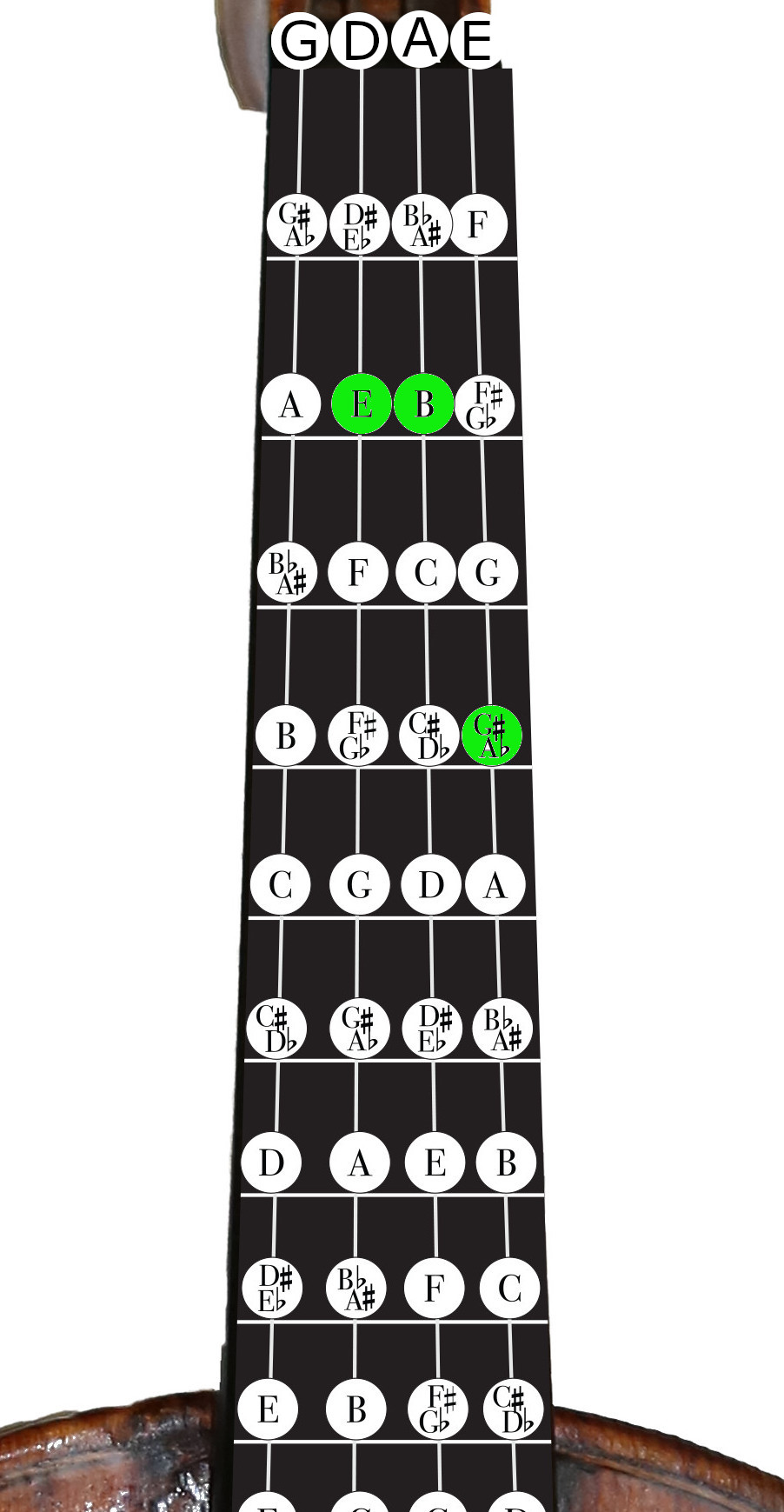

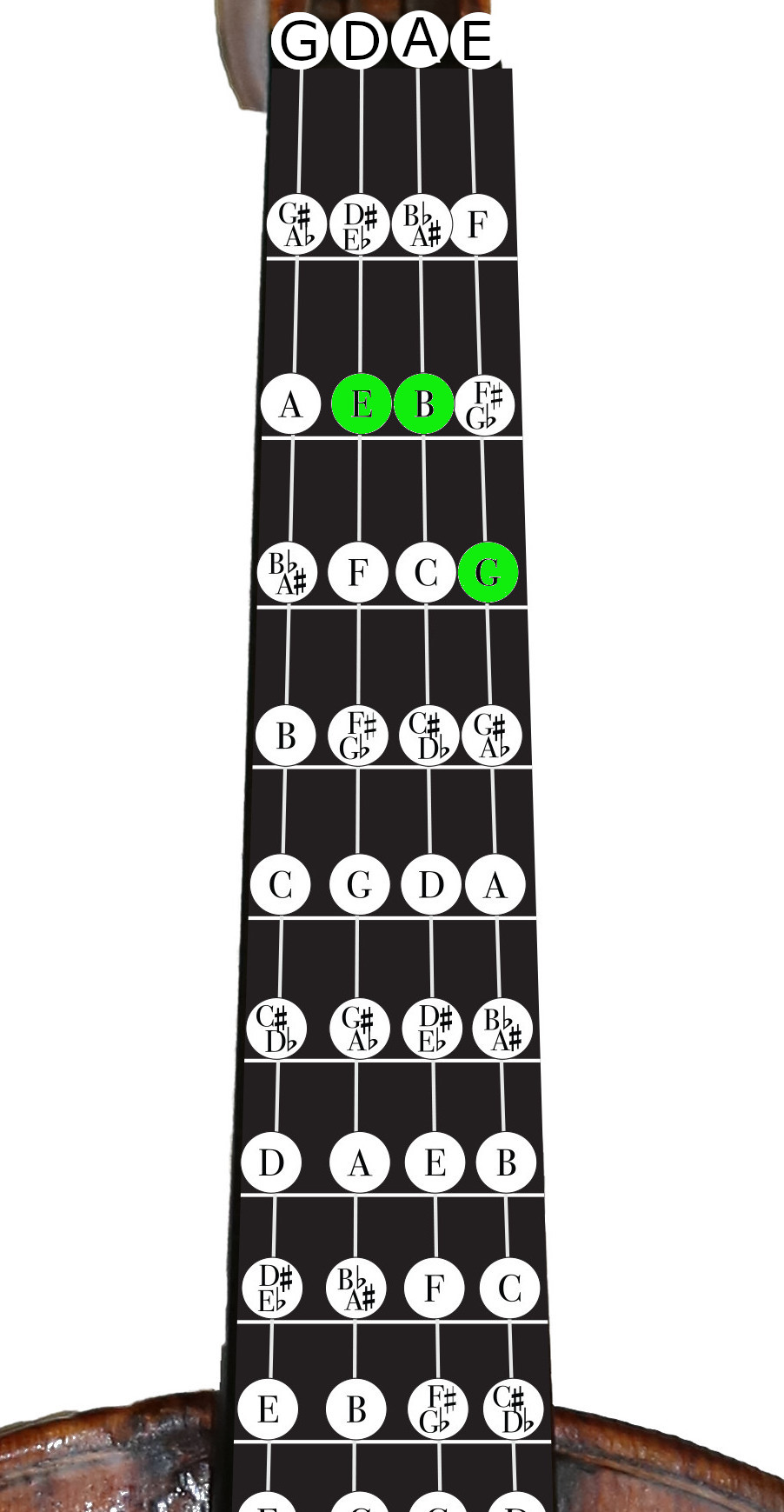
B Major violin chord
The notes are B D# F#. Play high 2nd finger B on G, high 2nd finger F# on D, high 3rd finger D# on A.
B Minor violin chord
The notes are B D F#. Play high 2nd finger B on G, high 2nd finger F# on D, 3rd finger D on A.

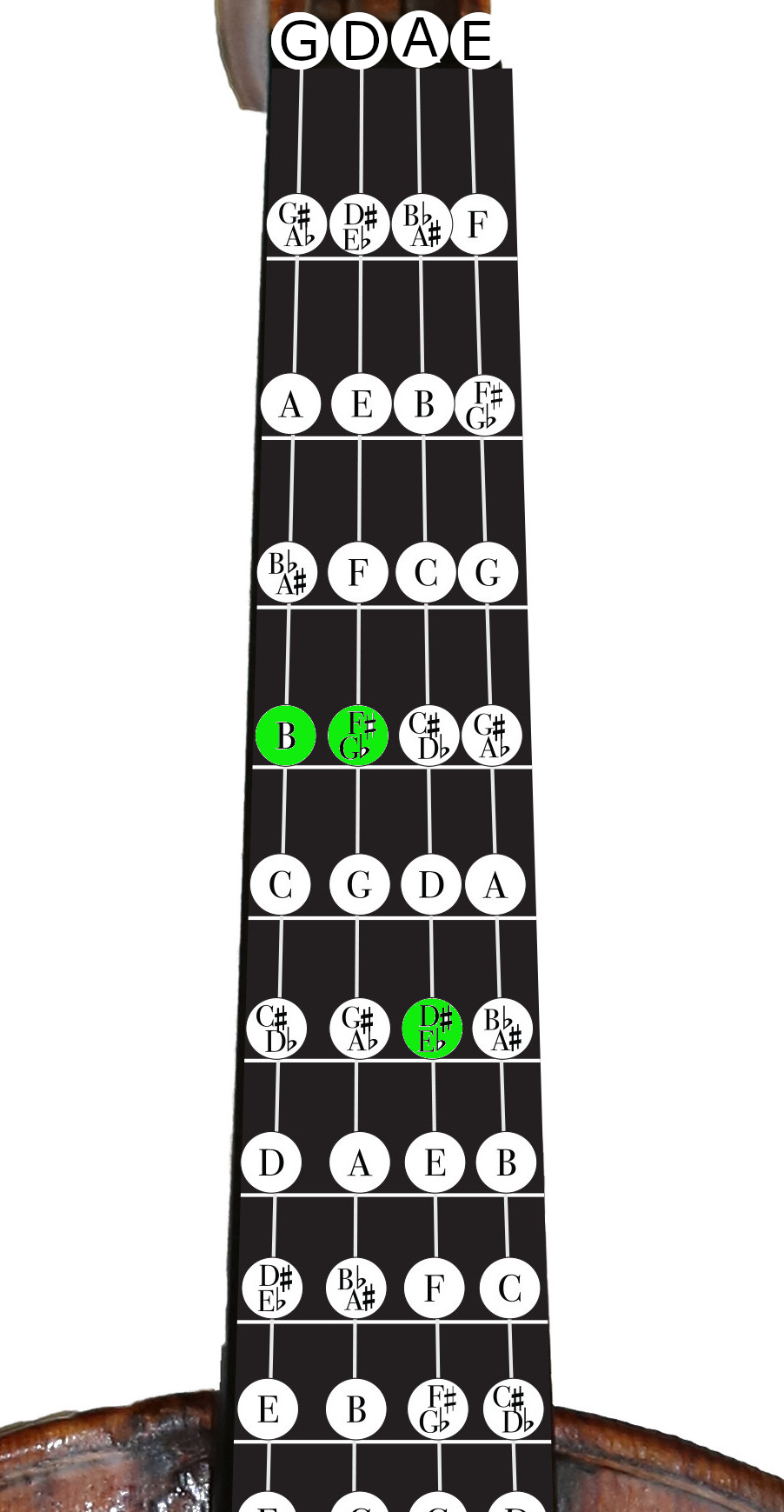

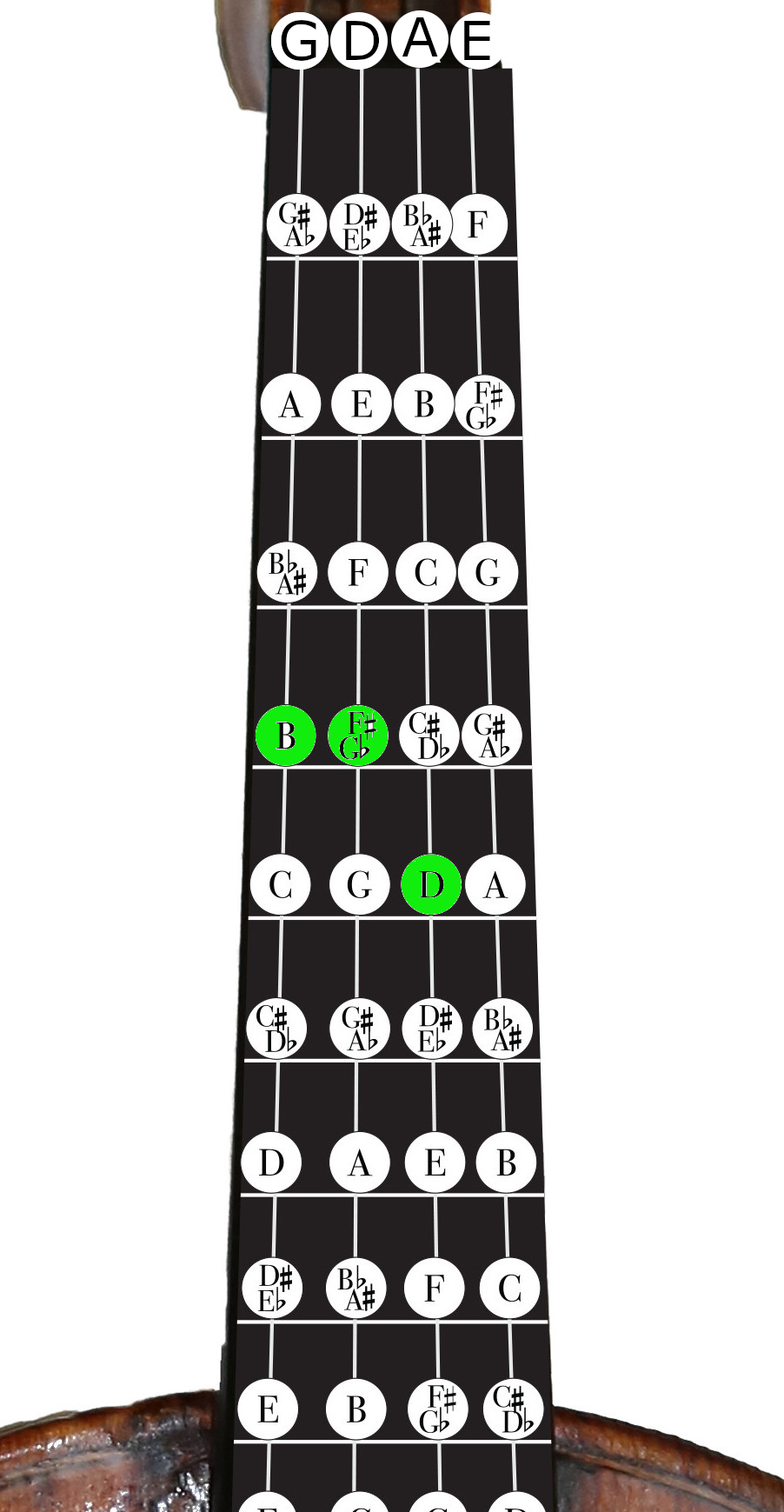

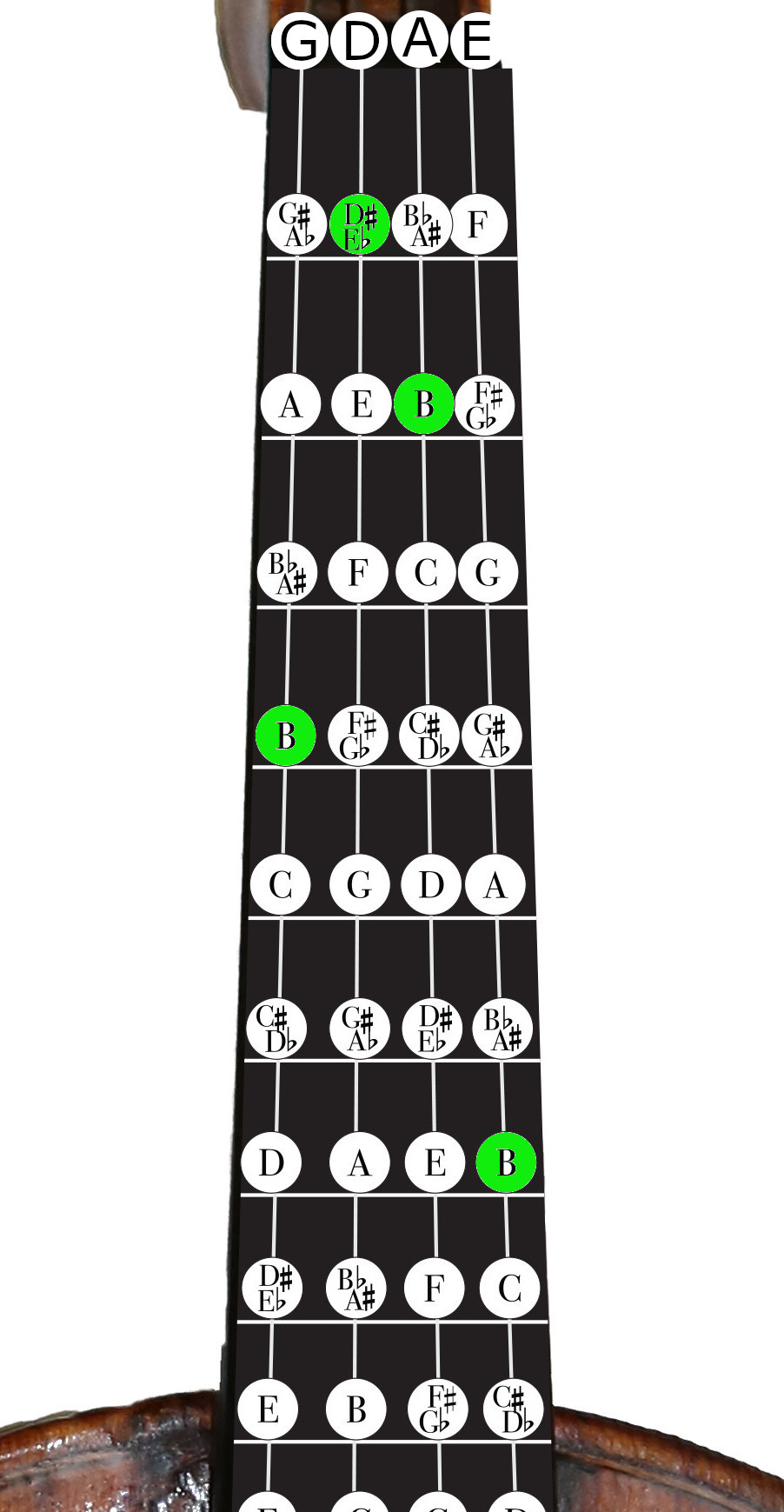

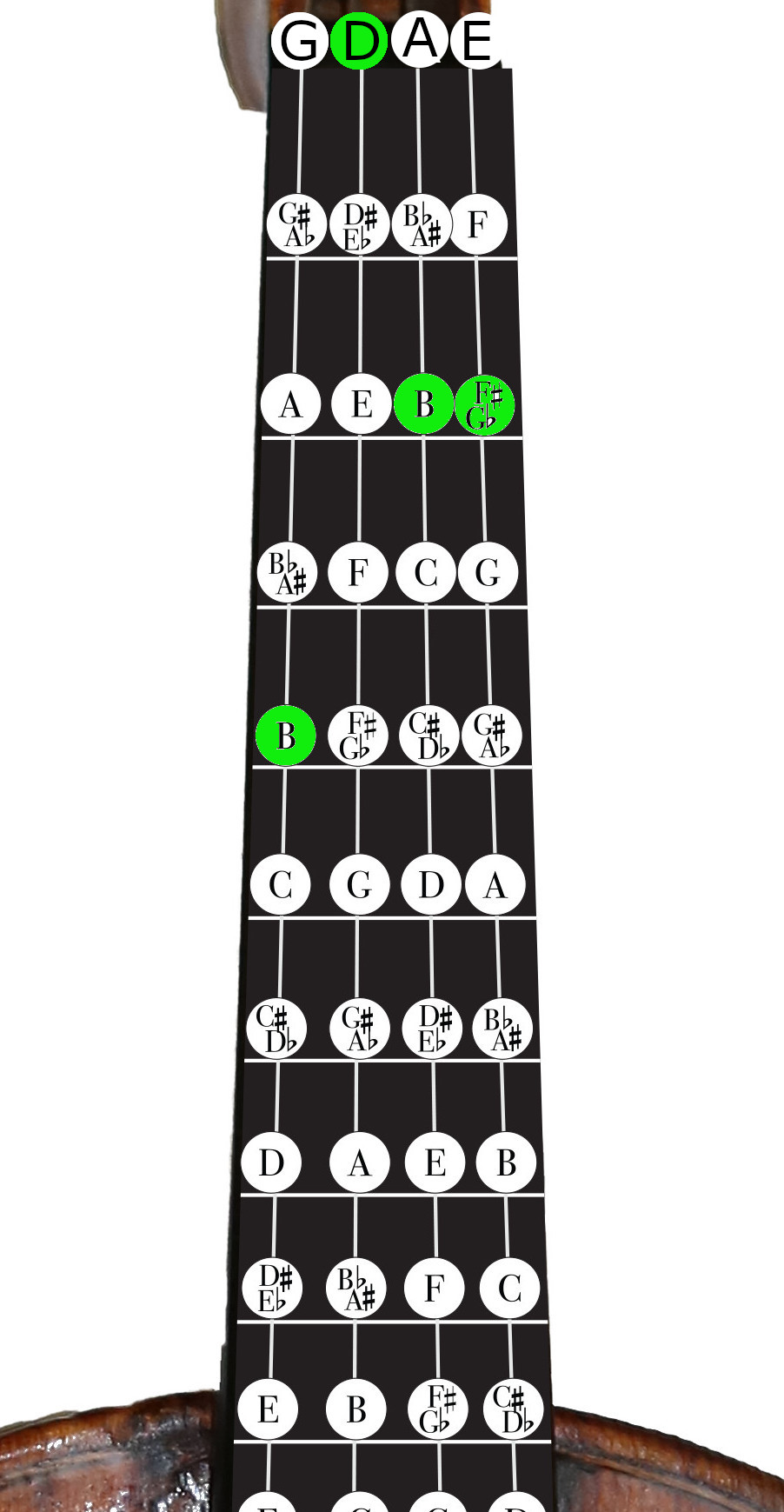
F# Major violin chord
The notes are F# A# C#. Play high 2nd finger F# on D, high 2nd finger C# on A, high 3rd finger A# on E.
F# Minor violin chord
The notes are F# A C#. Play high 2nd finger F# on D, high 2nd finger C# on A, 3rd finger A on E.
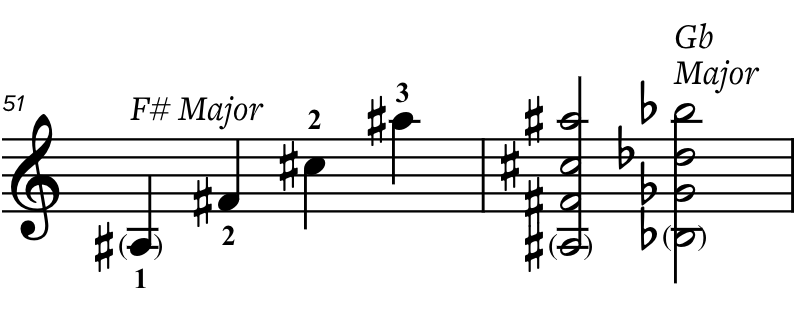
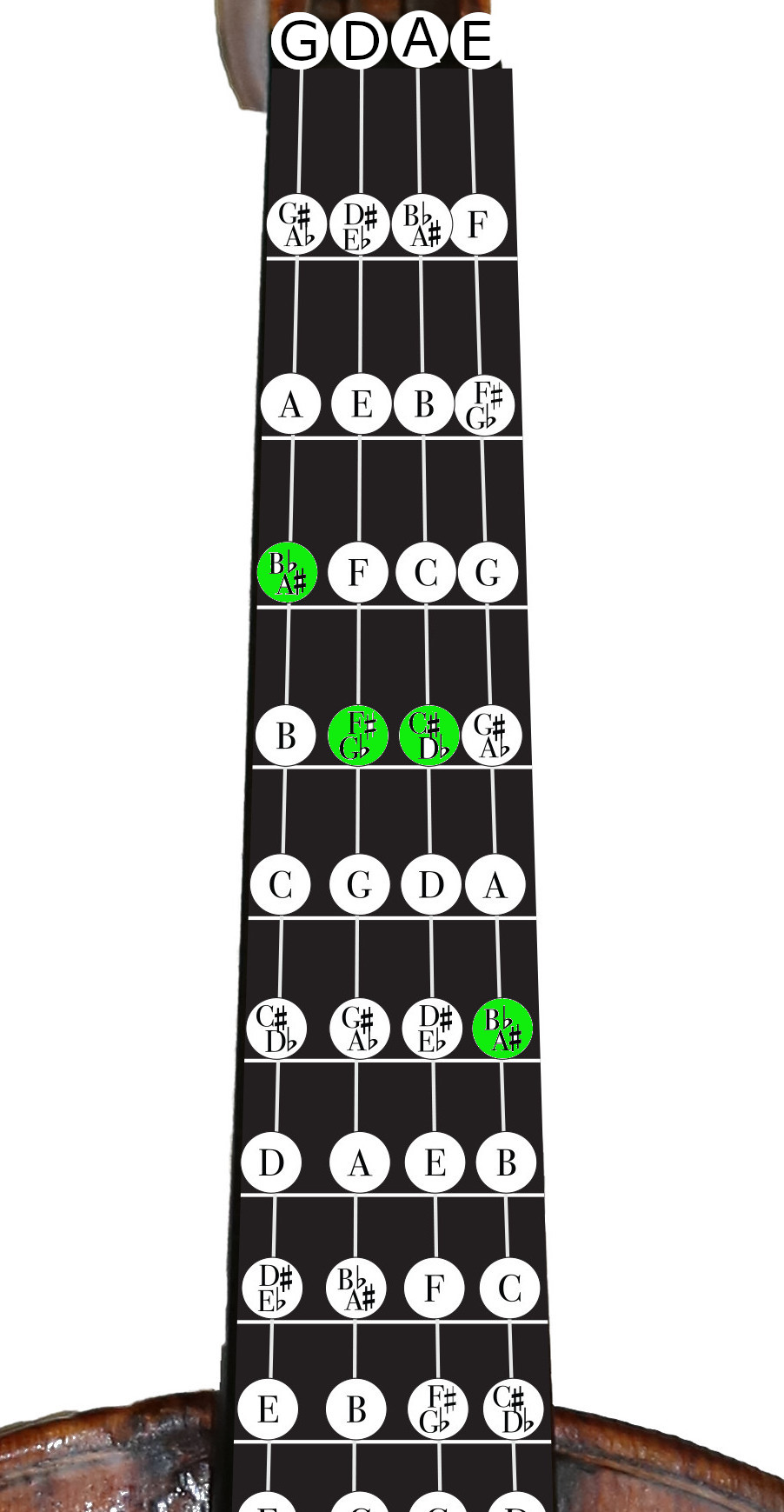
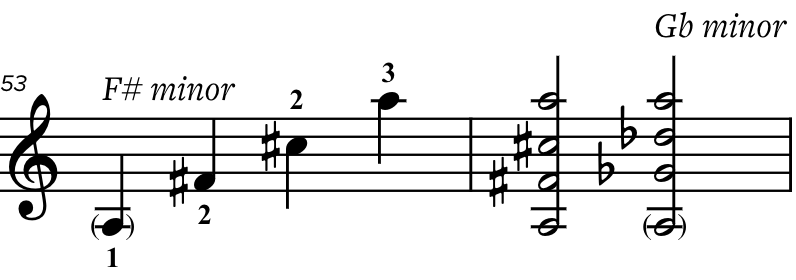
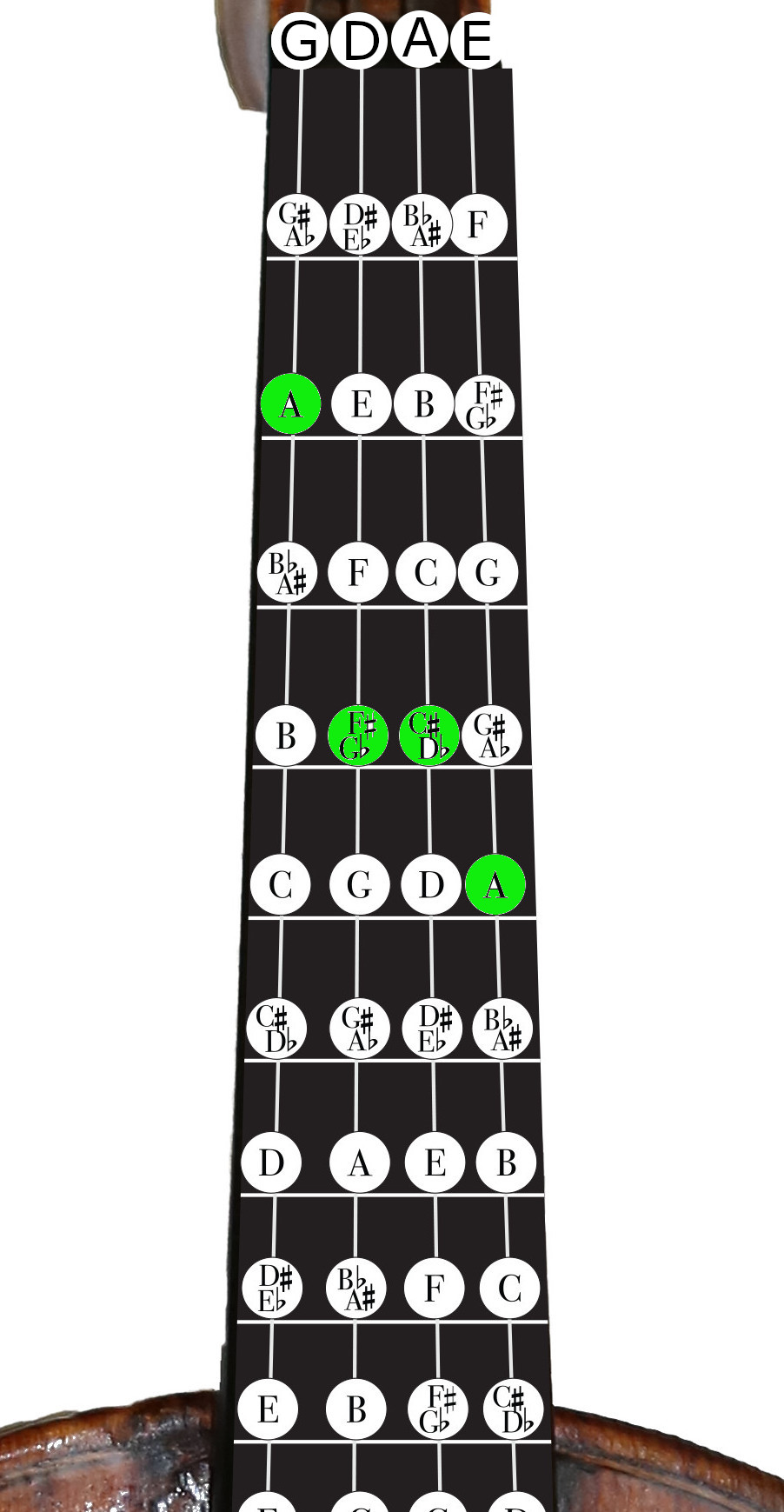
C# Major violin chord
The notes are C# E# G#. E# is the same thing as F♮, so the most comfortable way to play this is in 2nd position. Play 1st finger E# on D, then 2nd finger C# on A and 2nd finger G# on E. Make sure 1st and 2nd finger touch tightly.
C# Minor violin chord
The notes are C# E G#. Play 1st finger E on D, then 2nd finger C# on A and 2nd finger G# on E.

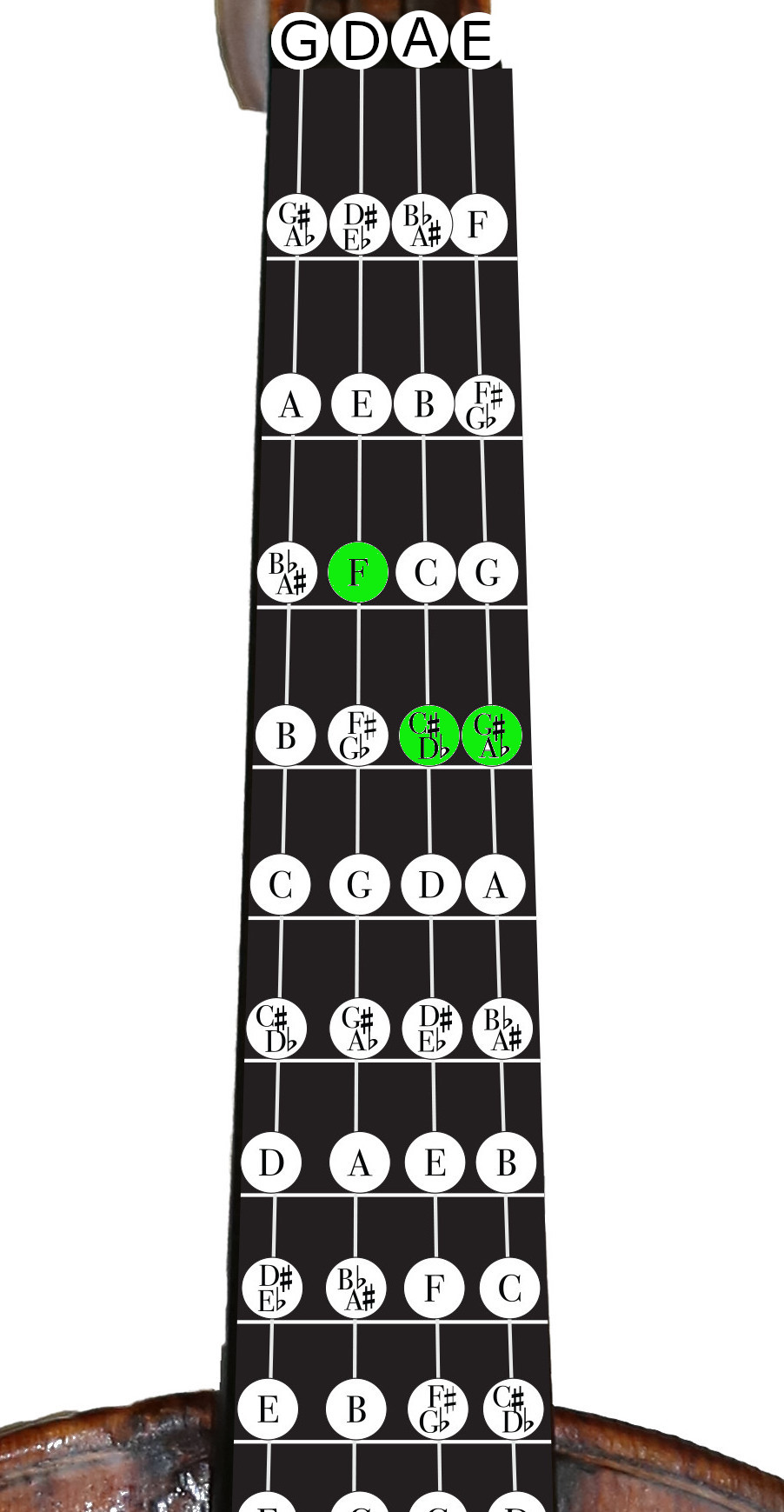

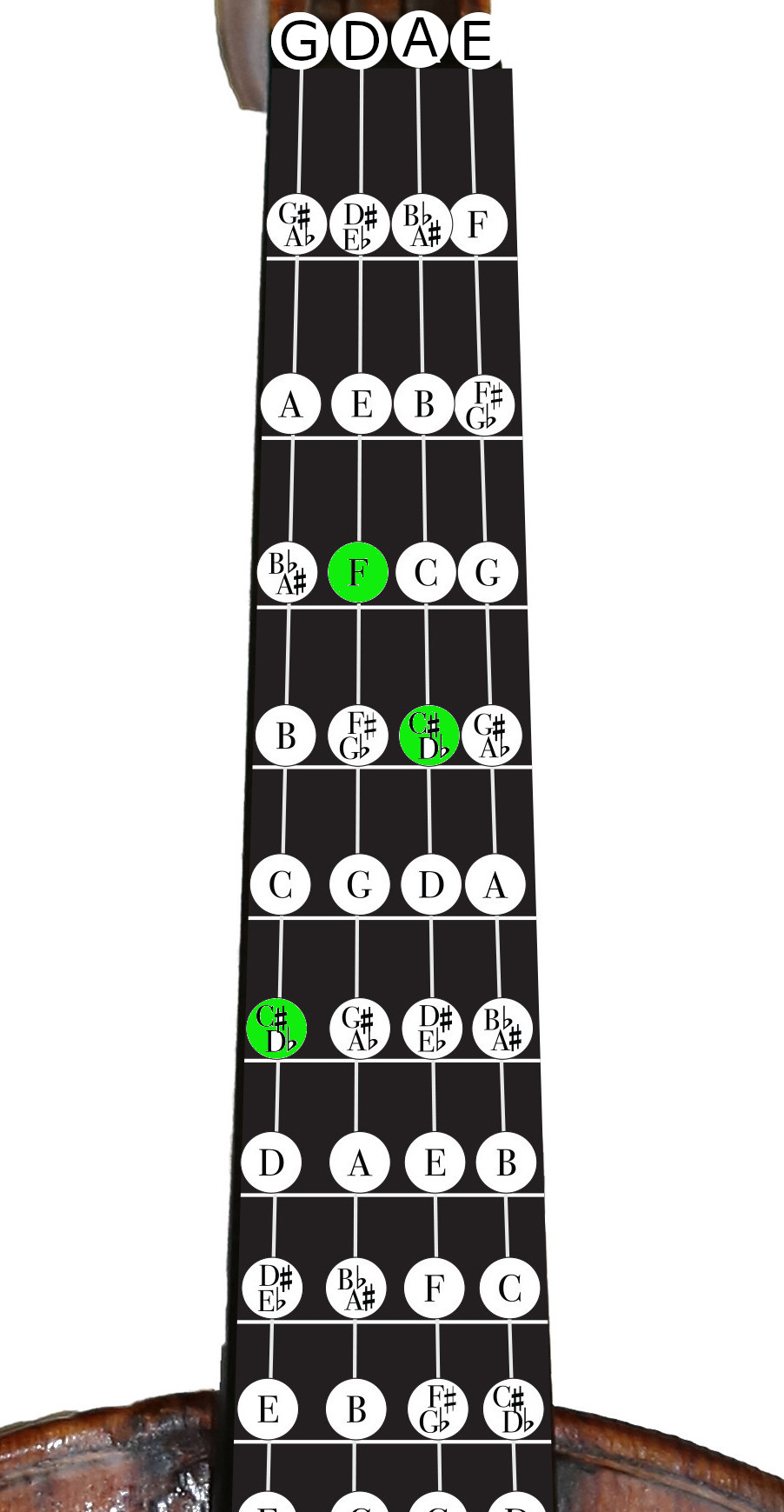

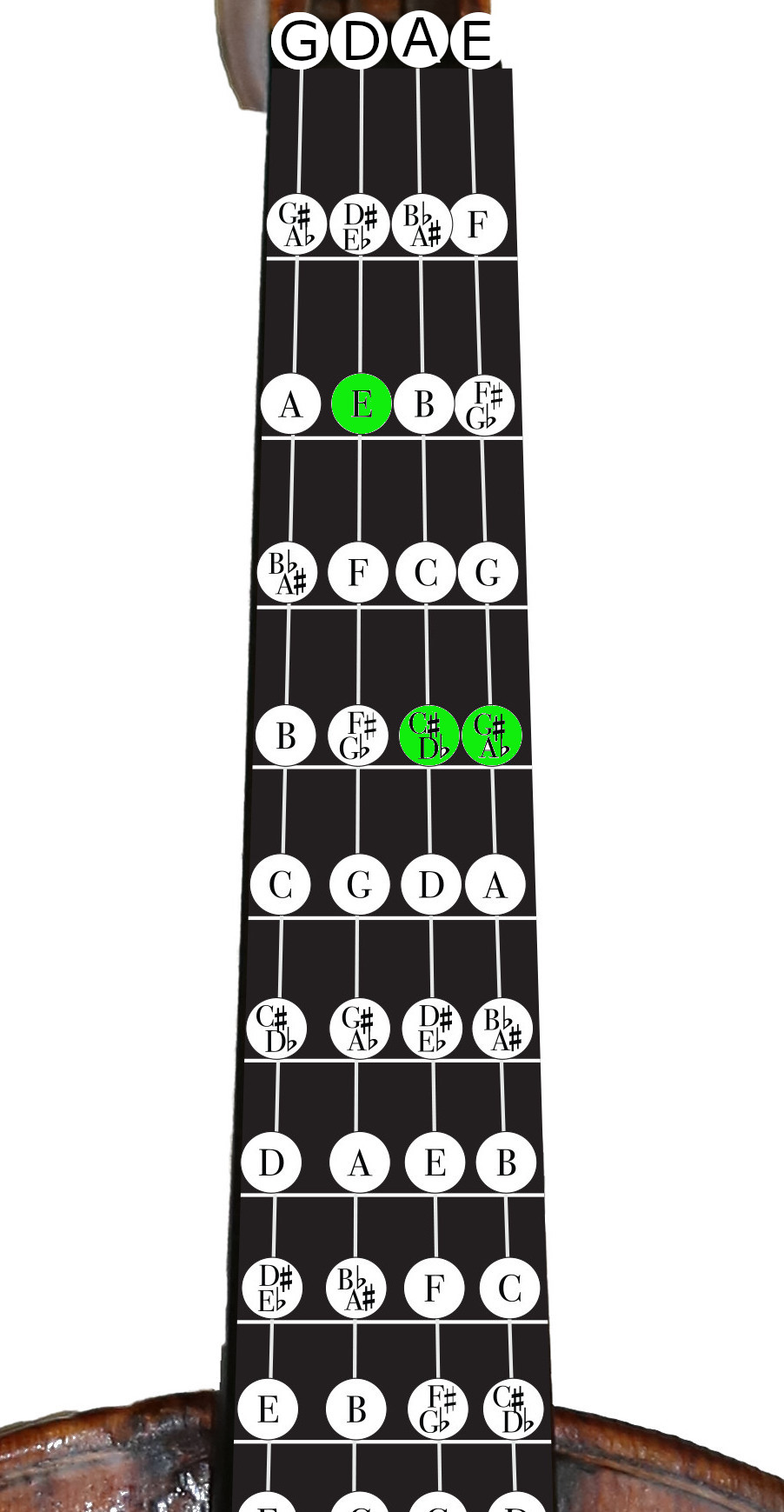
A♭ Major violin chord
The notes are A♭ C E♭. Play low 1st finger A♭ on G, low 1st finger E♭ on D, low 2nd finger C on A. Because 1st finger and 2nd finger are both low, they do not touch.
As G# major is enharmonically the same and the finger grip is the same, I will treat these two keys together.
A♭ Minor violin chord
The notes are A♭ C♭ E♭. Just remember that weird C♭ no one talks about is the same as B. Play low 1st finger A♭ on G, low 1st finger E♭ on D, and really low 2nd finger C on A. The fingers should touch.
As G# minor is enharmonically the same and the finger grip is the same, I will treat these two keys together.
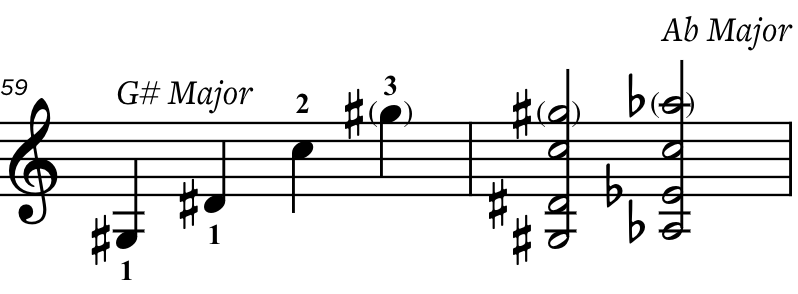
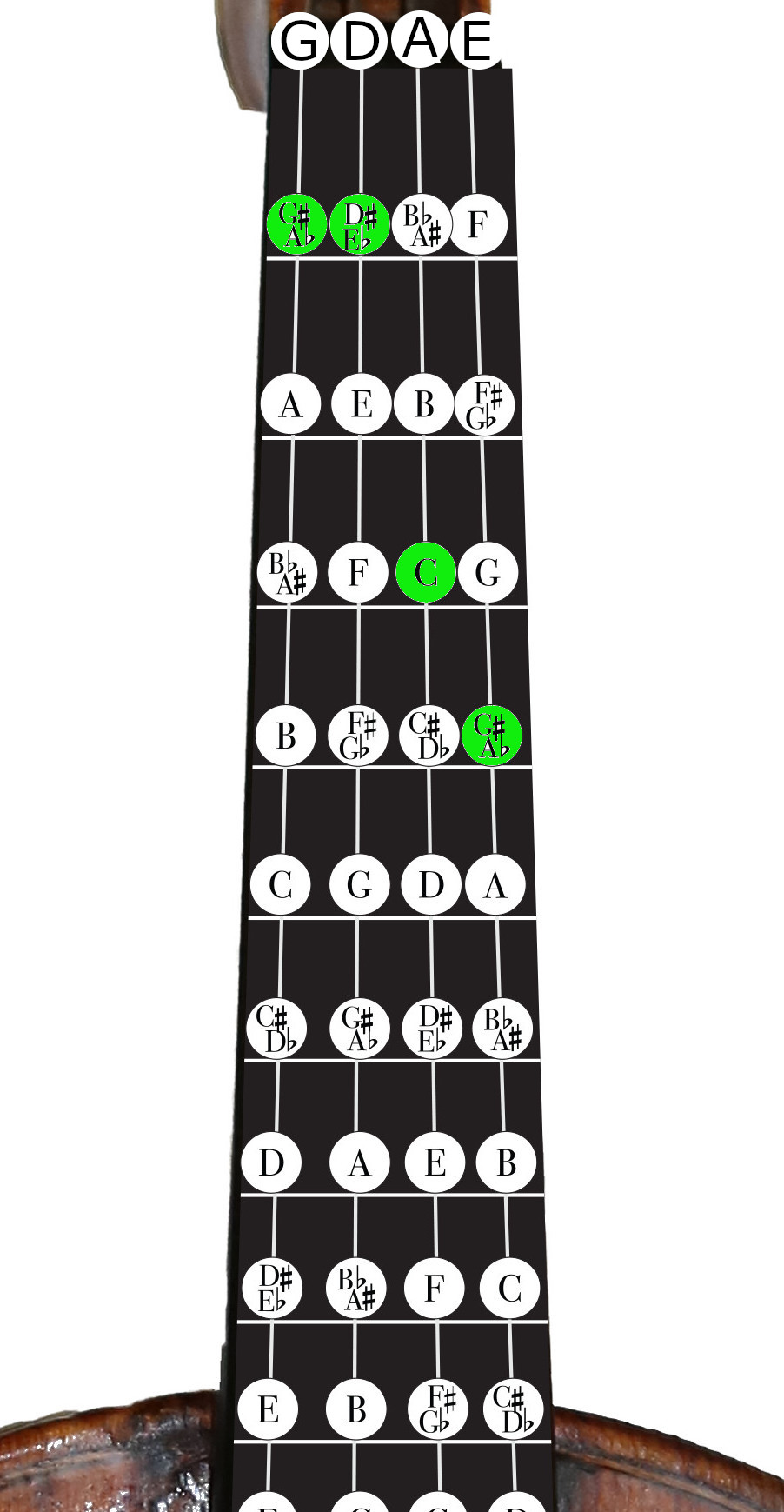
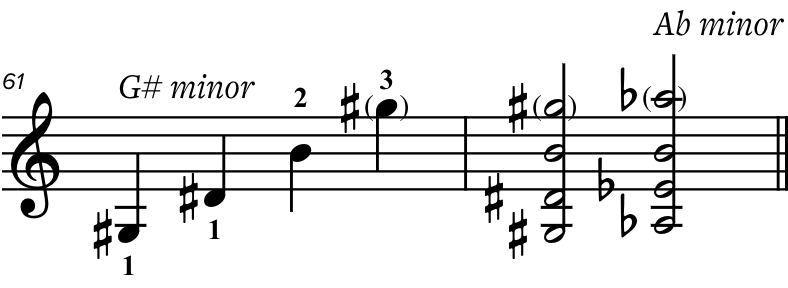
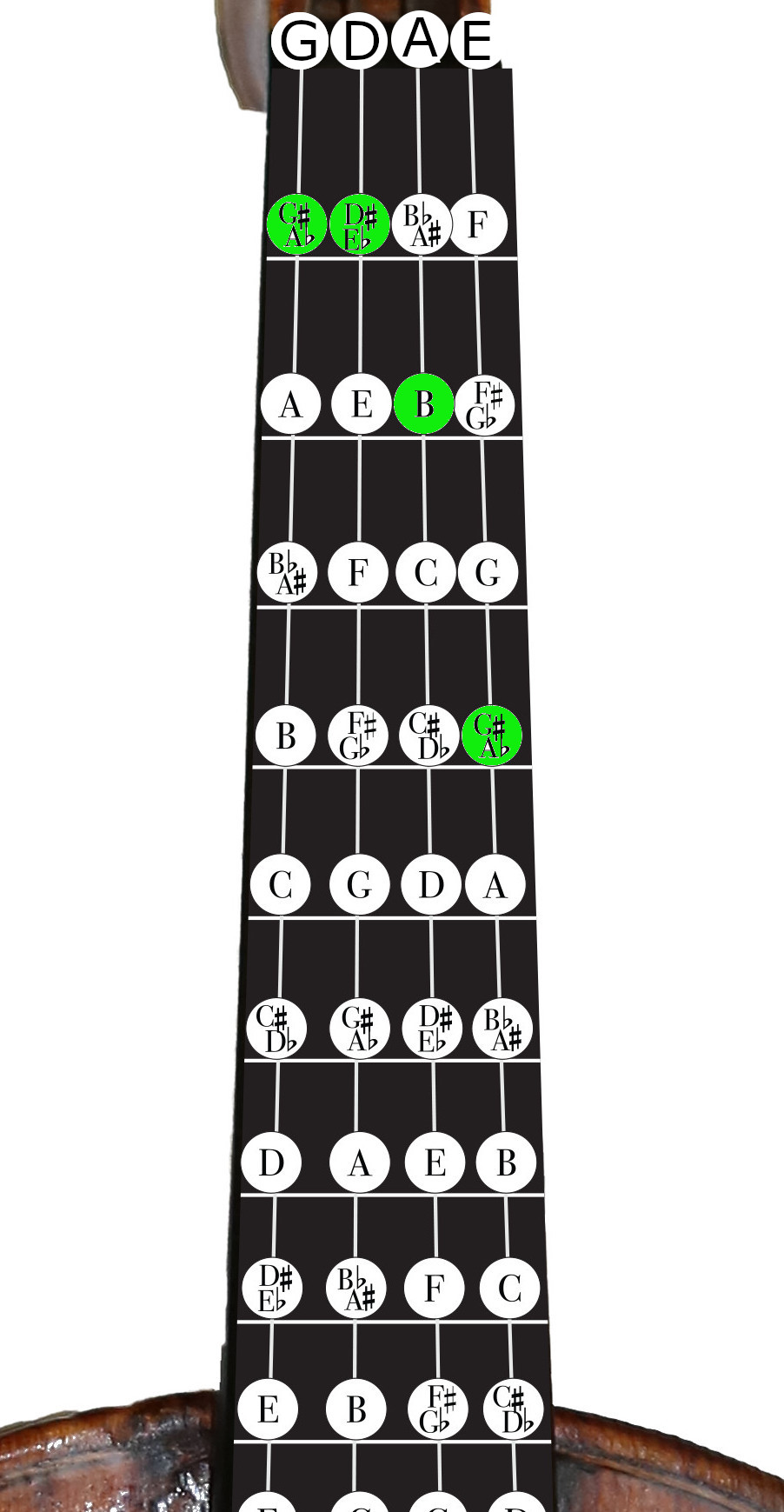
E♭ Major violin chord
The notes are E♭ G B♭. Play low 1st finger E♭ on D, low 1st finger B♭ on A, low 2nd finger G on E. The fingers do not touch.
As D# major is enharmonically the same and the finger grip is the same, I will treat these two keys together.
E♭ Minor violin chord
The notes are E♭ G♭ B♭. G♭ is the same as F. Play low 1st finger E♭ on D, low 1st finger B♭ on A, really low 2nd finger G♭ on E. The fingers should touch.
As D# minor is enharmonically the same and the finger grip is the same, I will treat these two keys together.
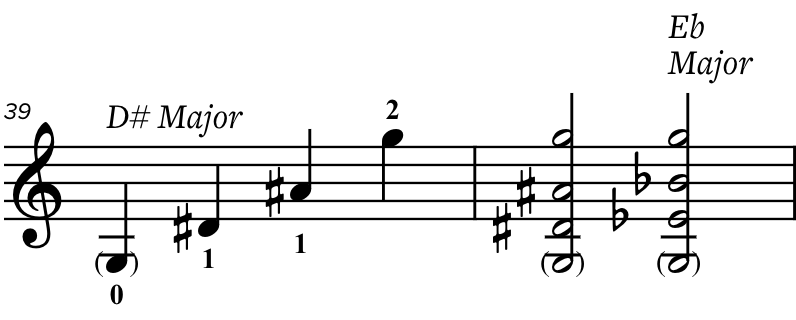
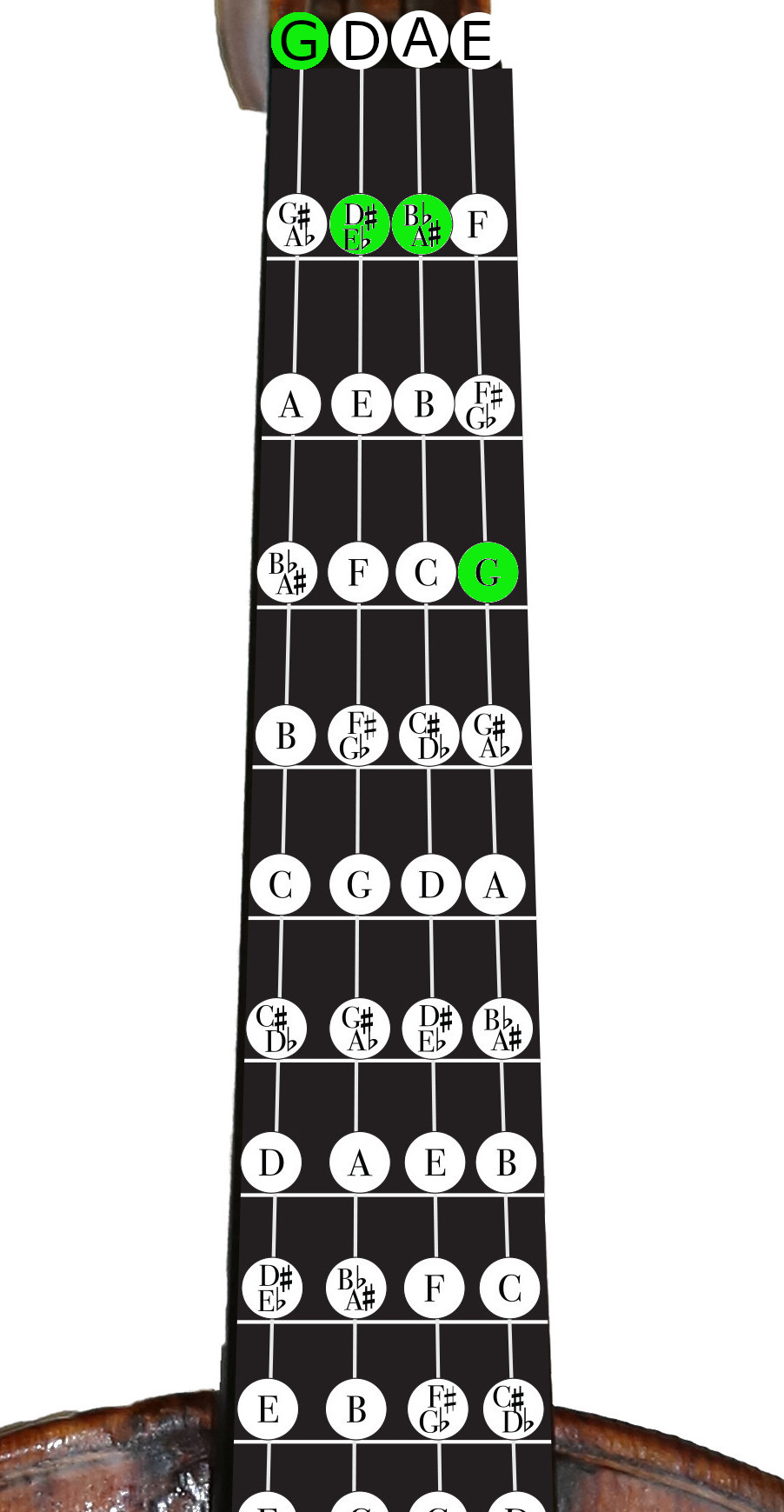

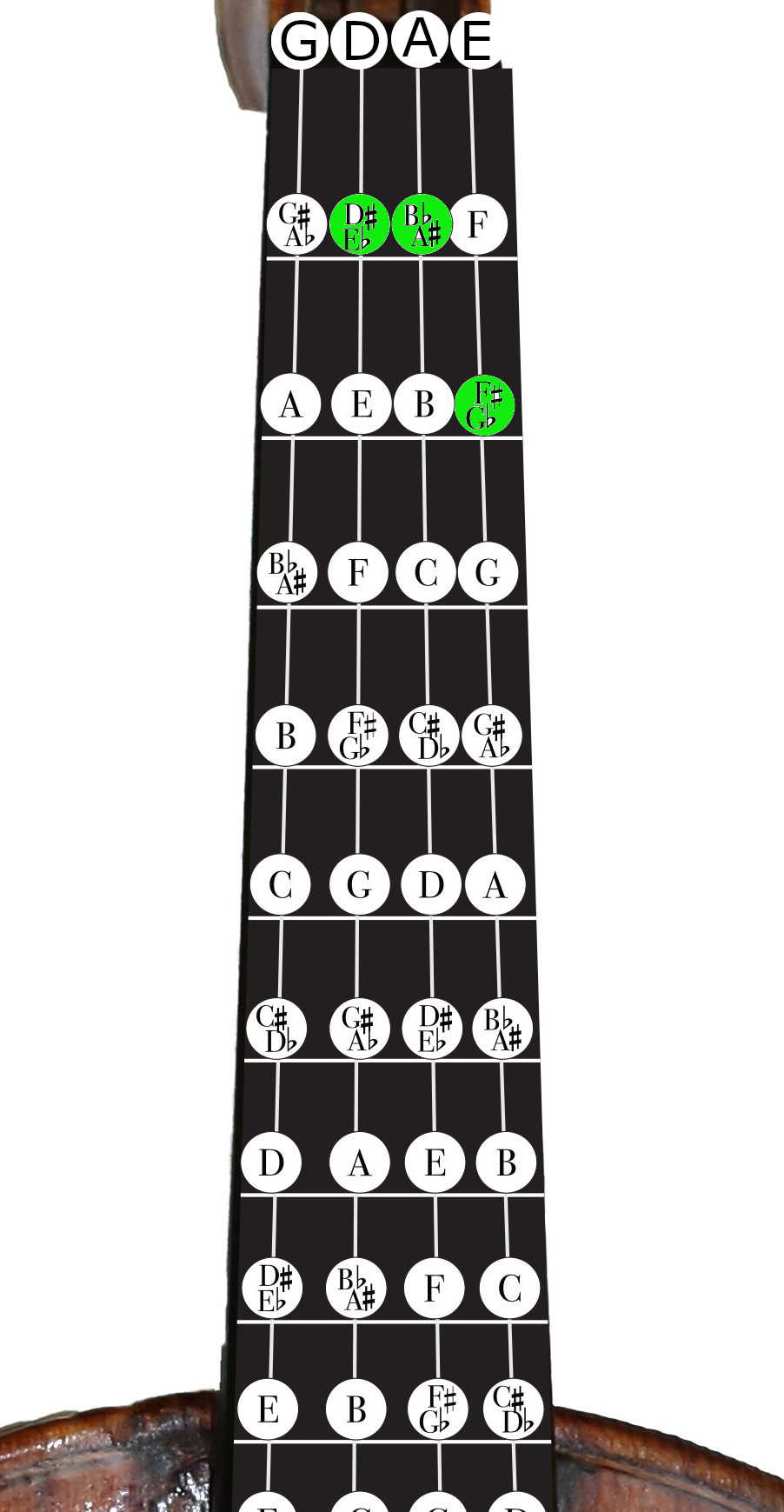
B♭ Major violin chord
The notes are B♭ D F. Play low 2nd finger B♭ on G, low 2nd finger F on D, and 3rd finger D on A.
A# major is enharmonically the same.
B♭ Minor violin chord
The notes are B♭ D♭ F. Play low 2nd finger B♭ on G, low 2nd finger F on D, and low 3rd finger D♭ on A.
A# minor is enharmonically the same.
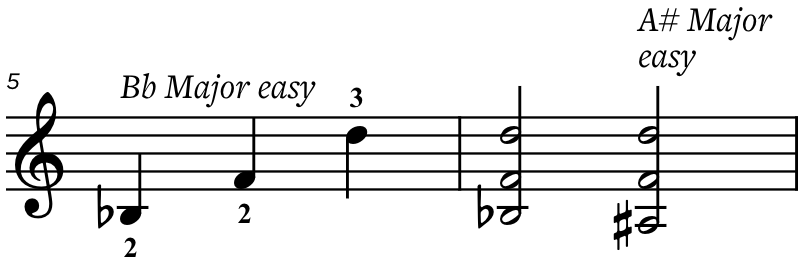
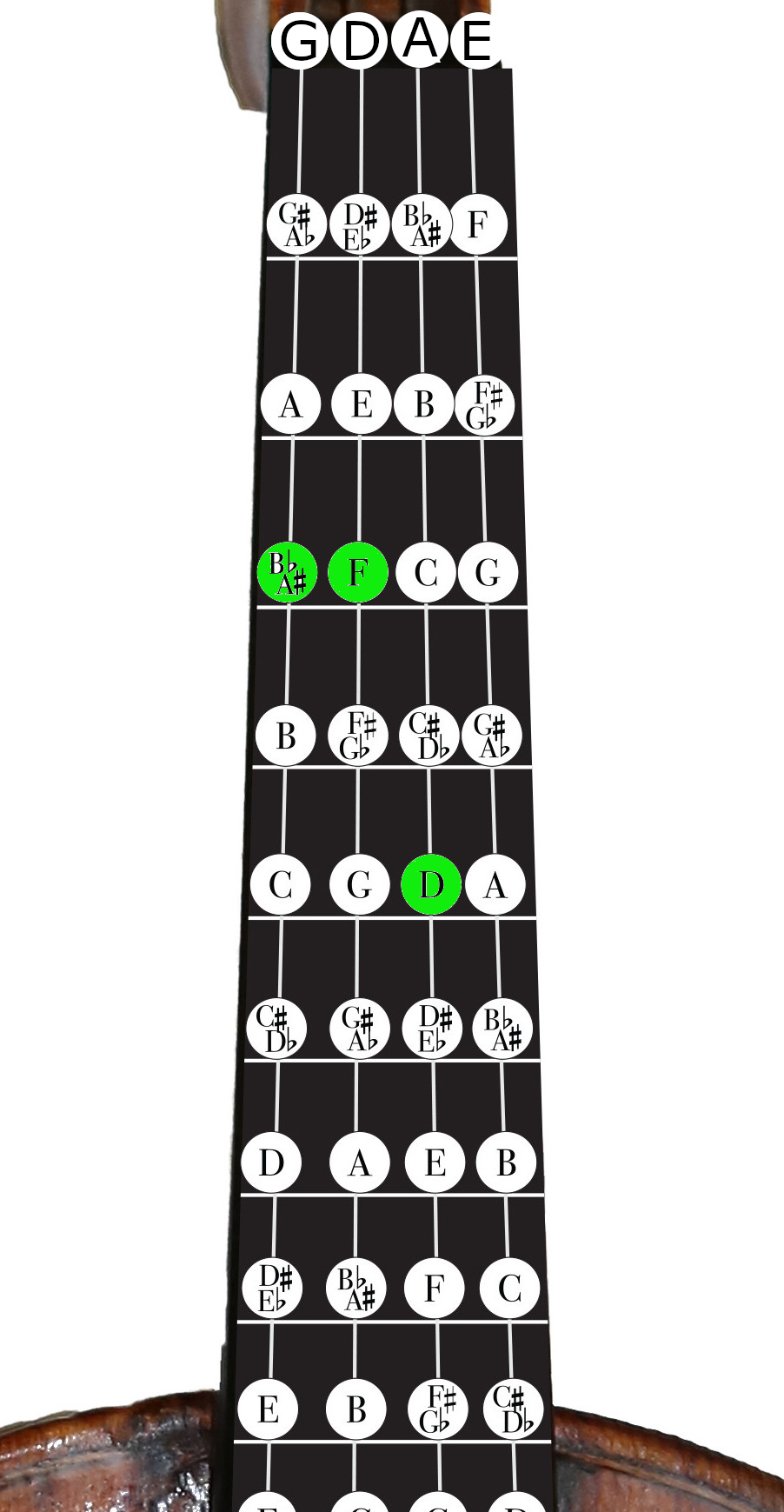
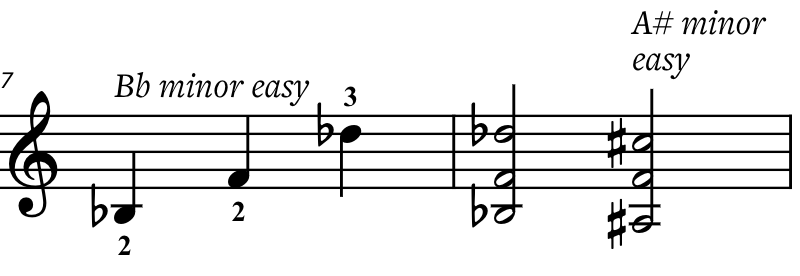
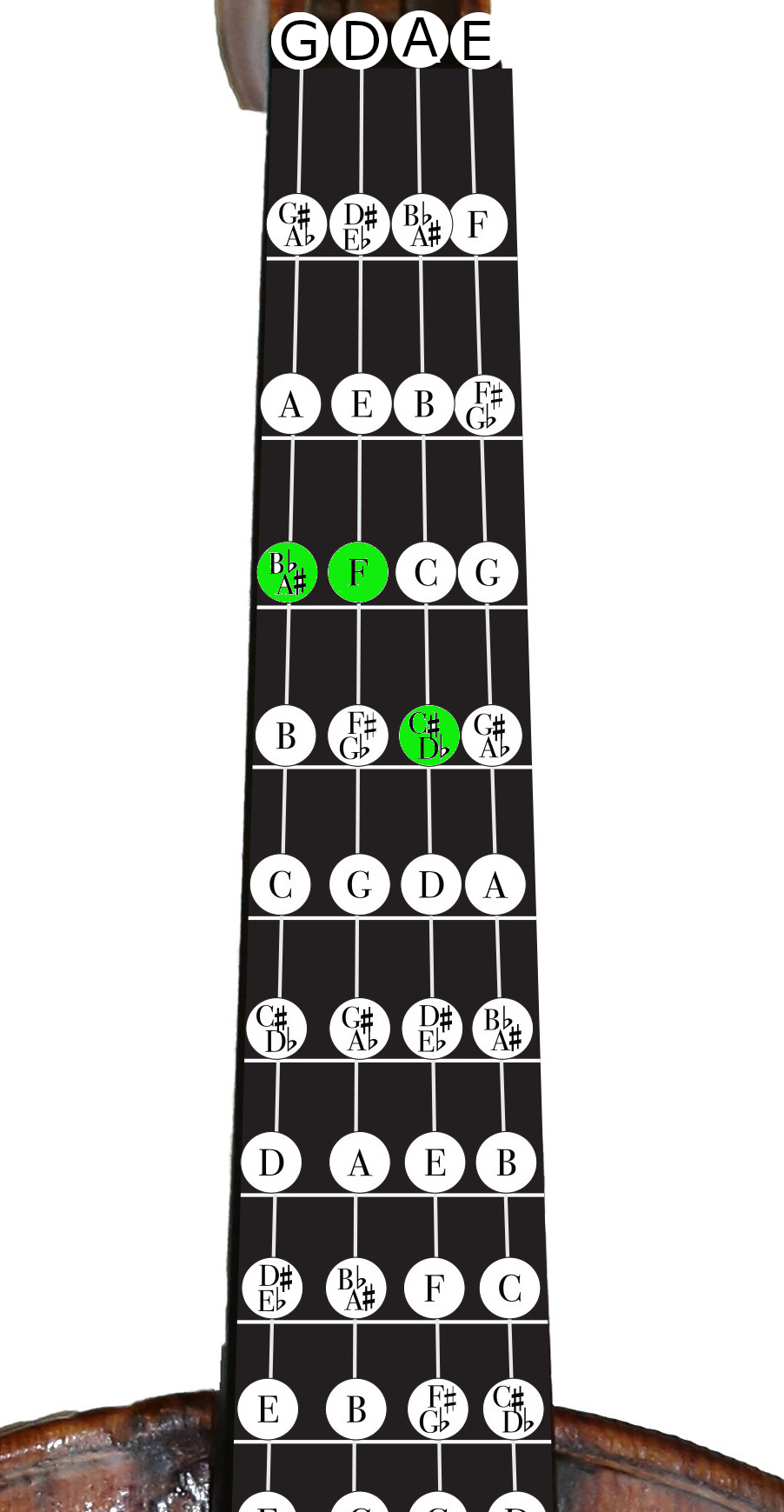

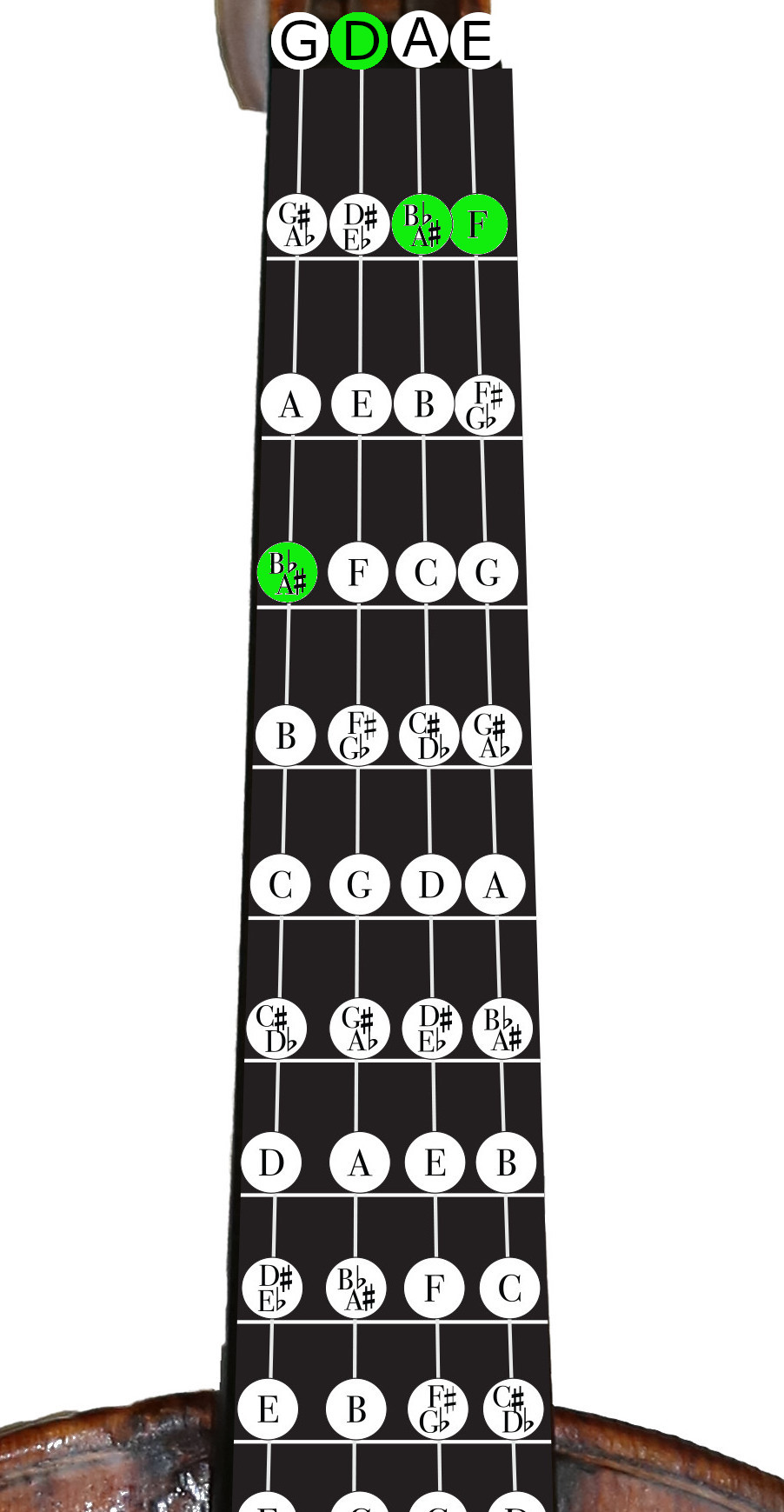

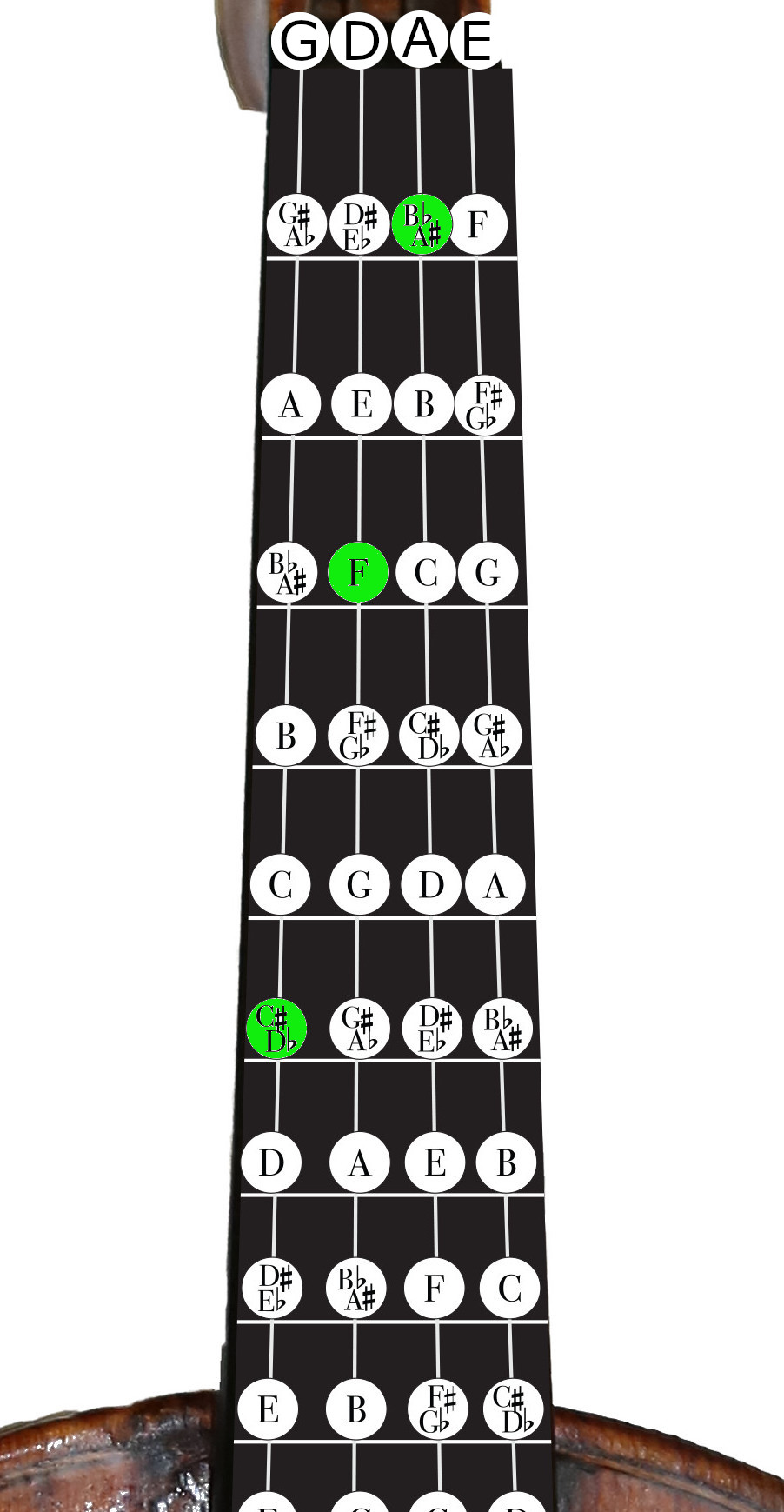
F Major violin chord
The notes are F A C. Play low 2nd finger F on D, low 2nd finger C on A, 3rd finger A on E.
F Minor violin chord
The notes are F A♭ C. Play low 2nd finger F on D, low 2nd finger C on A, low 3rd finger A♭ on E.

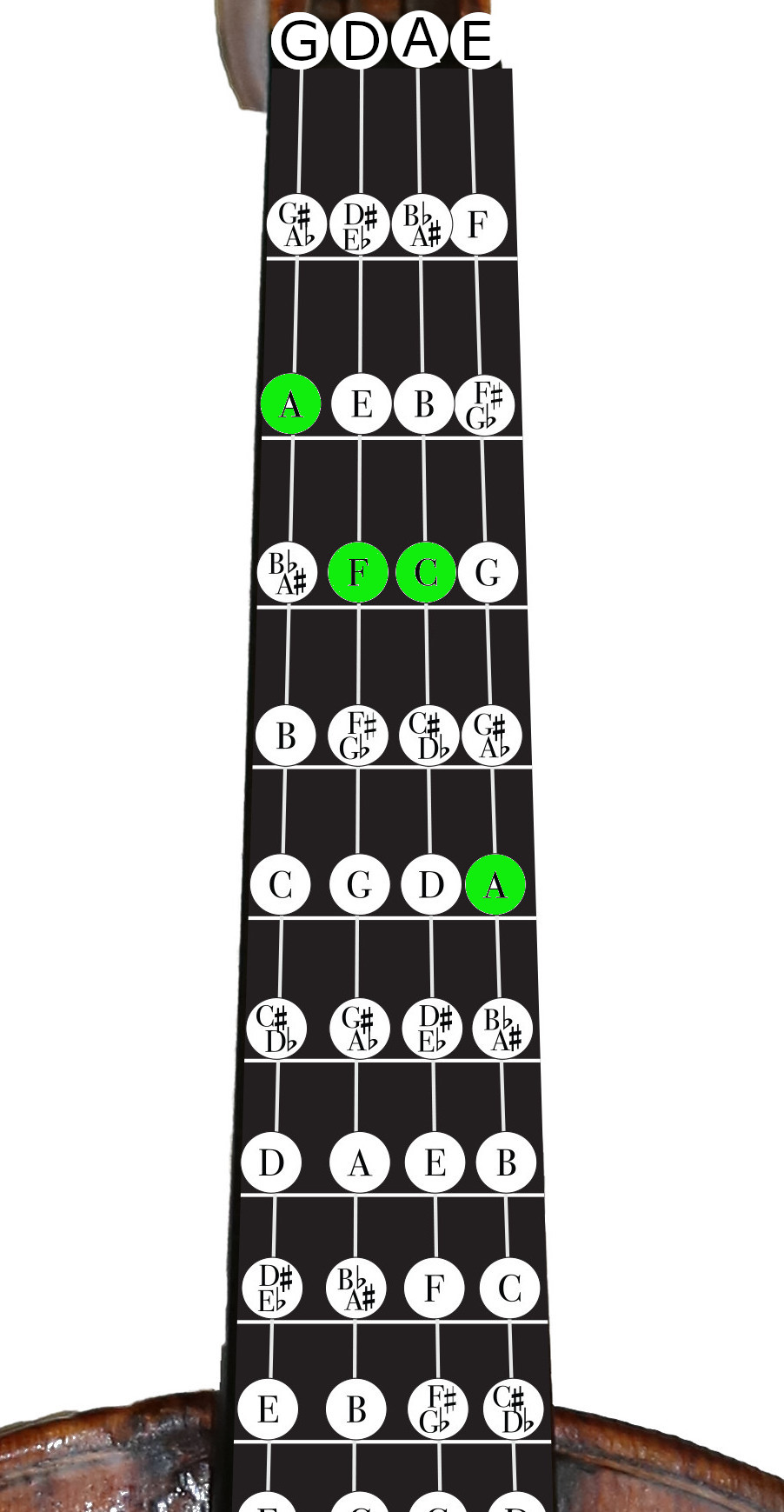

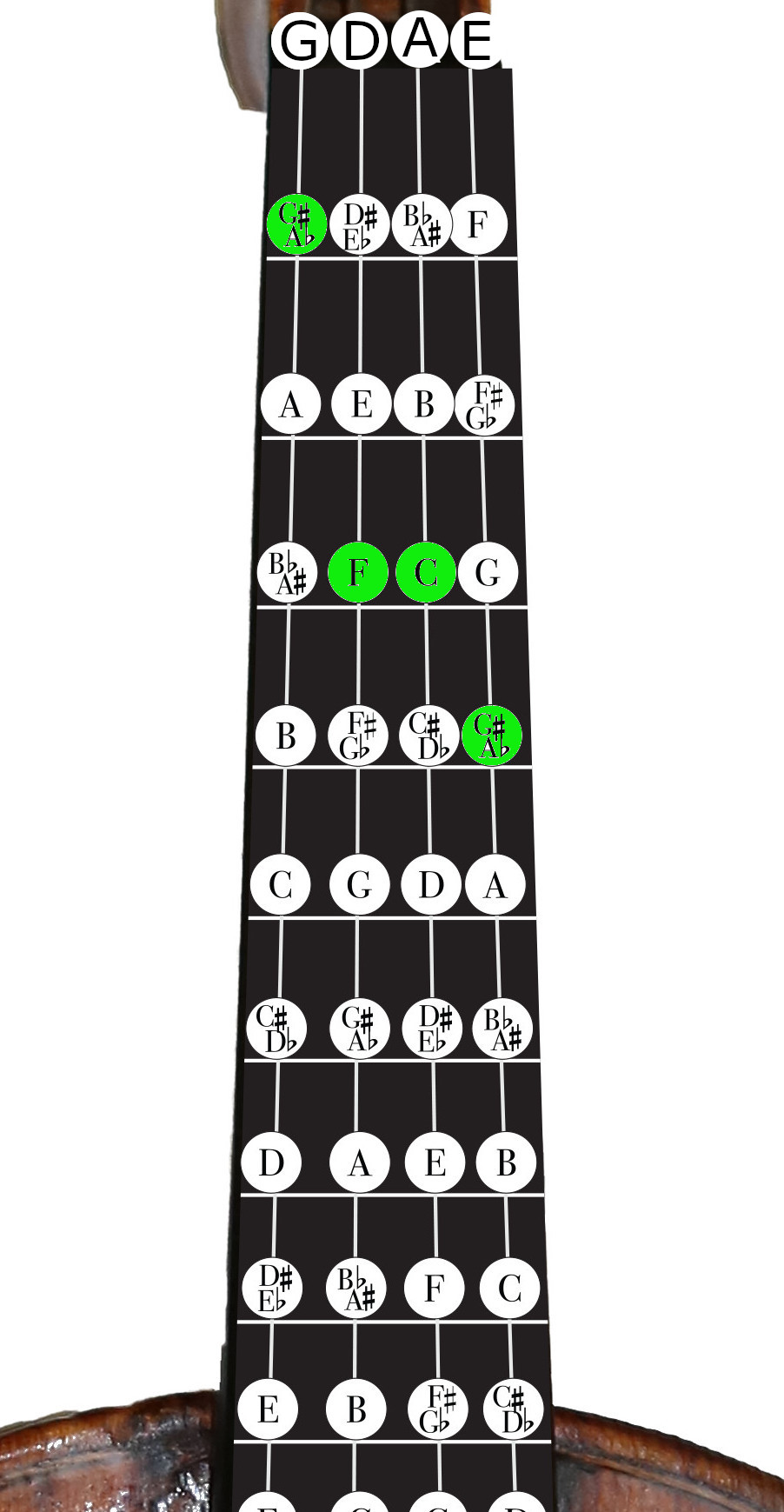
Examples of Violin Chords in Music
Kreutzer Etude No. 42 is a lovely two-part fugue and a great example of double stops. There are also a few three-note chords in the middle of the piece. It is great for learning to play double stops in tune while shifting and changing strings.
Bach’s Chaconne in D Minor is one of the most challenging violin pieces ever written, and an incredible treasure trove of chord technique. Not only is it rife with double stops, three-note, and four-note chords, but it also includes a technique called arpeggiating. The player holds down three strings at once as when playing a chord, but slurs the bow back and forth from one string to the next very rapidly, playing each note separately. The effect is very sparkling and impressive.
Orange Blossom Special. An article on violin chords wouldn’t be complete without some fiddle music! This famous tune opens with double stop glissandi (sliding between notes) to imitate a train horn followed by a rolicking theme and chances to improvise with as many double stops as you want.
Becoming fluent in chords in all different keys is a huge step in your violin journey. Congratulations and happy practicing!
Questions? Leave a comment!
FREE Violin Scale Book
Sensational Scales is a 85 page violin scale book that goes from simple beginner scales with finger charts all the way to all three octave scales and arpeggios

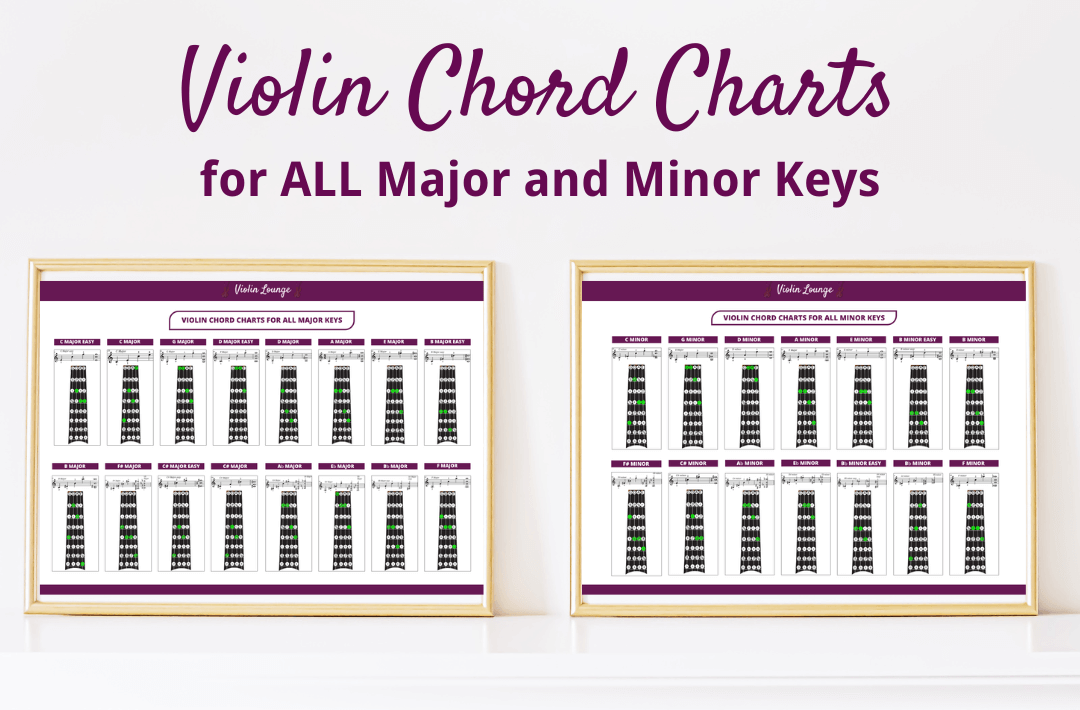
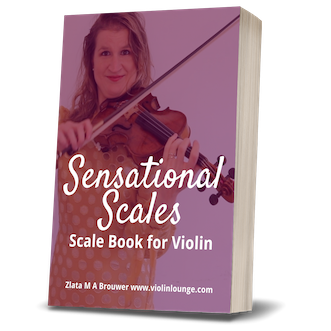
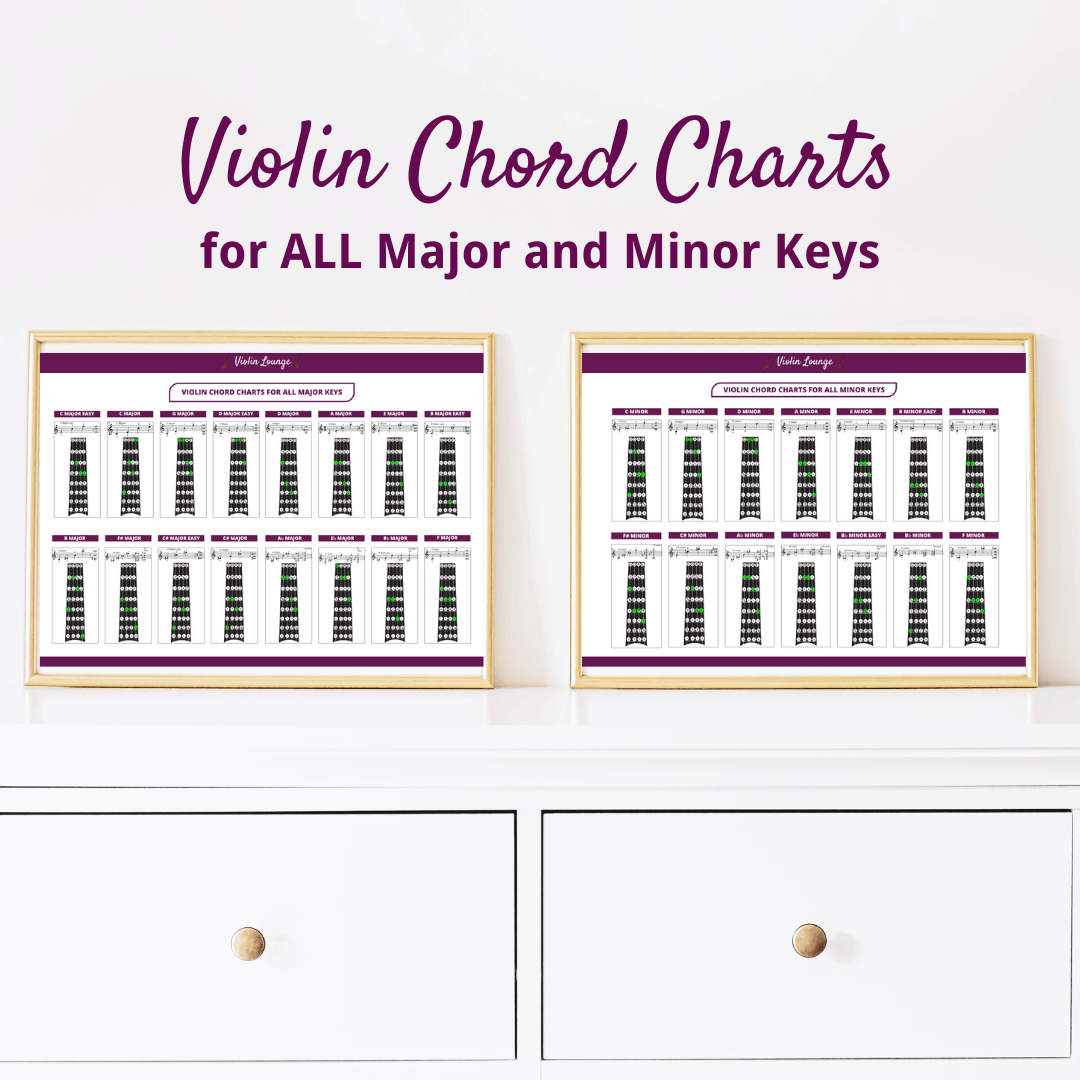
This is such a practical resource Zlata, I love it! Thank you for making this available.
Glad it’s helpful, Yael 🙂
This is very helpful! Thank you, is there a source for a chord chart that is printable?
Working on it!
Great! Are there cards for violaplayers too?
I don’t have them unfortunately. Perhaps I’ll make them in the future. You can do the chords without E string on the viola as well.
This is very helpful, just noting that there is no B in an Ab minor chord, it should be a Cb. Enharmonic but it still matters!
Thank you for noting!
Hi Zlata
I am a mature music student, currently studying composition for strings. Not being a string player, I find your diagramatic violin chord charts extremely useful for notating double stops – even for triple and quadruple stops – to determine which ones are viable. Thanks for helping the wider music community – not just violinists!
Wonderful, Colin, you’re welcome!